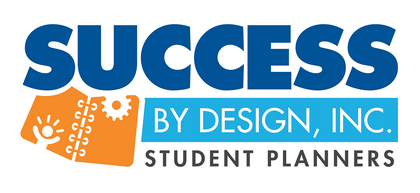
Welcome to successbydesignplanners!
- Request a Sample

Shopping Cart
Continue Shopping

Filter Products
Planner type.
- Weekly View
- With Subjects
- Without Subjects
- 8.25 x 10.75
Useful Links
- Hit enter to expand submenu Elementary
- 1020D: My Planner
- 1090D: Build Character...Build Community
- 2020D: Build Character...Build Community
- 2045D: Plan Better. Live Boldly.
- ANSD: The Assignment Notebook (Dated)
- 5020D: The Daily Student Planner (Dated)
- ANS: The Assignment Notebook
- 5020: The Daily Student Planner
- ANS2Y: The Assignment Notebook
- Hit enter to expand submenu Middle
- 2025D: Prepare. Excel. Succeed.
- Hit enter to expand submenu High
- 450D: Life's Your Stage...Step it Up!
- 650D: Plan for Life
- Hit enter to expand submenu Religious
- CSP: The Catholic Student Planner
- 7020: The Daily Student Planner
- UPDATED CSP: The Catholic Student Planner
- PSTEM: Primary STEM Planner
- ESTEM: Elementary STEM Planner
- MSTEM: Middle School STEM Planner
- HSTEM: High School STEM Planner
- School Imprint Covers
- School Spirit Covers
- STEM Themed Covers
- Religious Themed Covers
- Stock Folders
- Custom Folders
- Student Handbooks
- Hit enter to expand submenu Inserts
- Character Insert - Elementary
- Character Insert - High School
- The Bully Game
- Character Bulletin Board Kit
- Hit enter to expand submenu Wall Charts
- HM Vertical
- HM Horizontal
- Ruler/Bookmark
- Hit enter to expand submenu My School Years Memory Book
- MSY Softcover
- MSY Hardcover
- Customer Referrals
- Hit enter to expand submenu Order Information
- Order Information
- Custom Order FAQ
- Eco-friendly Commitement
- Why Buy Printed Planners
- Benefits of STEM Planners
- Hit enter to expand submenu Customizing Your Planner
- Customizing Your Planner Instructions
- Fonts, Mascots, & Colors
- Shipping Policy
- Business Documents

In middle school, students face new personal and academic challenges. Students must deal with multiple classes and teachers, juggling due dates and preparing for standardized tests. Plus, they must manage all this while learning to develop homework strategies, take responsibility for their grades and cultivate passions — that’s a lot to keep track of at once.
At Success by Design, our middle school student planner meets the unique personal and developmental needs of students in grades six through eight. Purchasing on behalf of your school or district? Submit your order via the checkout feature and include your PO number (if applicable). You can also view our W-9 and Sole Source Letter here. If you have additional questions, our team is happy to help!
Shop In Stock Jr. High School Planners
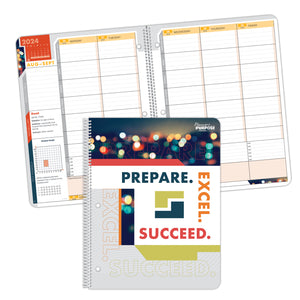
2025D: Prepare. Excel. Succeed. Student Planner - 2024-2025
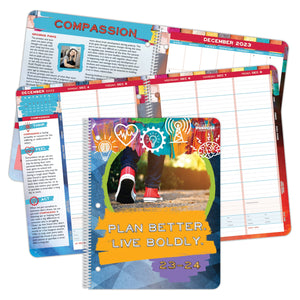
2045D: Plan Better. Live Boldly. Student Planner - 2024-2025

MSTEM: Middle School STEM Student Planner - 2024-2025
Middle School Student Planner
About our middle school assignment planners.
Junior high school is a time of personal and academic challenges for many students. Unlike elementary school, students in middle school must juggle multiple classes, manage various due dates and prepare for standardized tests. In addition to in-school responsibilities, students are starting to develop homework strategies, learning how to take responsibility for their grades and discovering their passions through extracurricular activities.
One of the best ways for learners of any age to stay organized is with a homework planner. At Success by Design, we understand the unique needs of middle school students and offer comprehensive planner options to help students stay on top of their personal and academic responsibilities.
Features of Our School Planners for Middle School
Each spiral-bound student planner features a durable cover and includes a quick reference guide. We tailor our planners to student's cognitive stage and offer two themes for students aged 10 to 14:
- Prepare. Excel. Succeed.: With weekly vocabulary words, test questions and an area to plan after-school activities, the simple layout of our Prepare. Excel. Succeed. planner allows learners to manage their time effectively . Your students can use our printed planner to develop the necessary skills for content mastery.
- Plan Better, Live Boldly.: Our Plan Better, Live Boldly. planner helps students develop good character through pages dedicated to valuable character traits and the importance of developing good behavior. When students get an in-depth look at these character traits, they gain the confidence to apply these skills in their daily life.
Middle school is a time for students to become more independent and start planning for the future. All of our middle school student planners also include the following features to help your learners develop critical thinking and time management skills:
- Dated and undated pages
- Goal setting pages
- Durable spiral binding
- Goal setting sections
Customization Options
Get your students excited about using their planners by customizing your order to match your school's culture. Choose from school , STEM and religious imprint covers or have your cover showcase school spirit by displaying your school colors, motto or mascot. You can also further customize your middle school agenda books by adding the following features:
- Student handbook sections
- School name
- School calendar sections
- Multiple color designs
- Resource pages
Supplemental Items
To further enhance your middle school assignment planners, you have the option to add supplemental items such as:
- Student handbooks
- Hall passes
- Character inserts
When you add these inserts , your students can easily access essential information and recourses to achieve academic success.
Stay Organized With The Best Planners for Middle School Students From Success by Design
As an administrator, you must help your students stay on track to achieve academic success. At Success by Design, we understand the challenges middle school students face and use this knowledge to create planners that give students the ability to focus, learn and grow.
Our student planners have a 100% satisfaction guarantee. If you or your students are not completely satisfied with our planners, call one of our customer service representatives and we will refund your purchase. To learn more about our planners, contact our team at 844-263-0872 today!

Setting SMART Goals With Your Students
- Mar 24, 2020
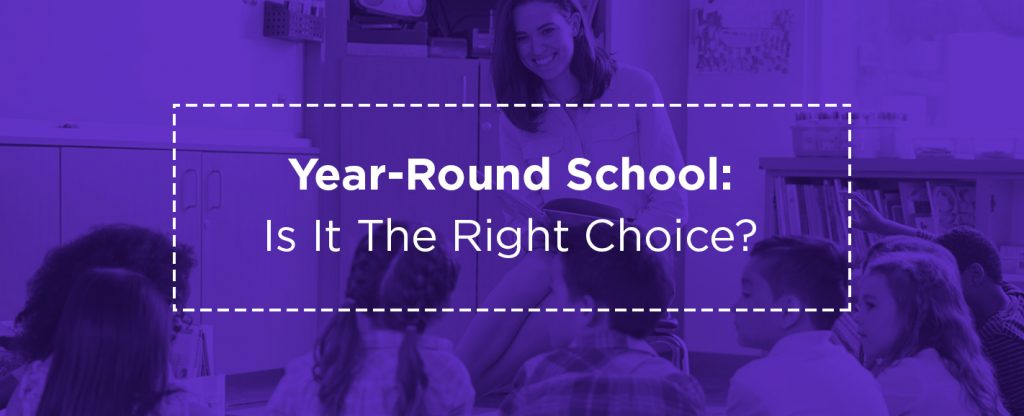
Year-Round School: Is It the Right Choice?
- Oct 10, 2019
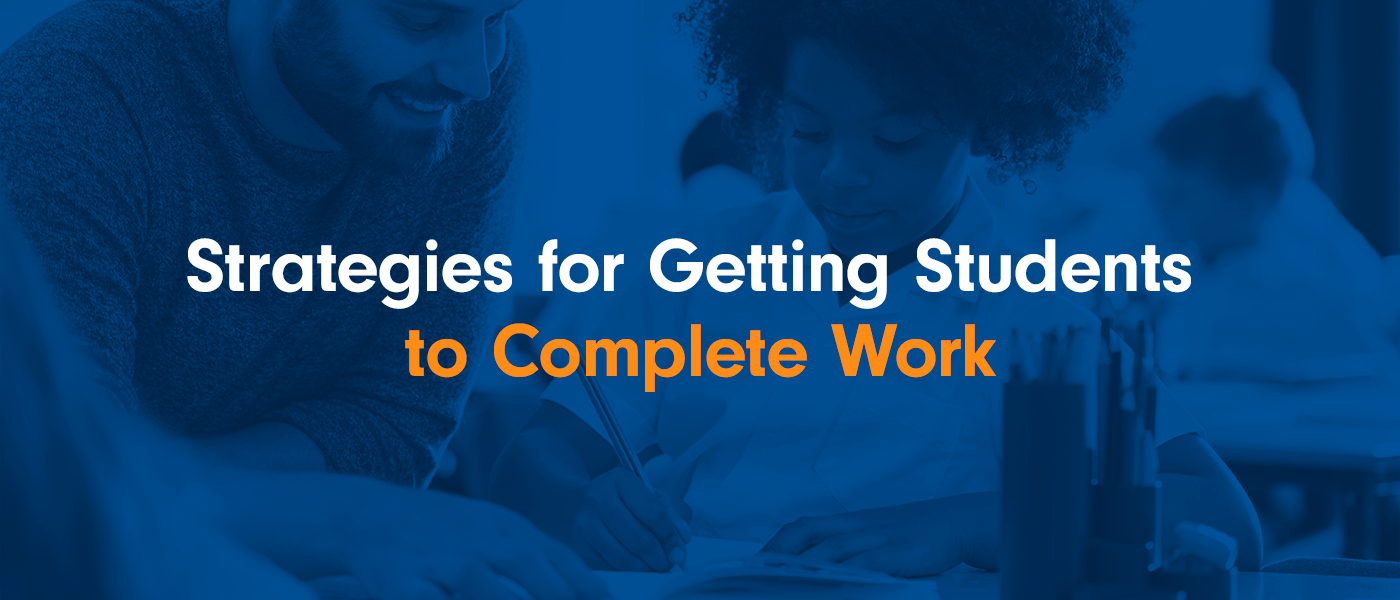
Strategies for Getting Students to Complete Work
- May 09, 2018
ALL STUDENT PLANNERS
All custom covers, customize your planner, our products.
- Planners with a Purpose
- STEM Planners
- Additional Items
- Customizing Your Planner
- Terms of Service
Keep in Touch
- 3741 Linden Ave, S.E. Wyoming, MI 49548
- Phone: 844-263-0872
- Email: [email protected]
- Grades 6-12
- School Leaders
Don't Miss the Grand Prize: A $2,500 Office Depot/OfficeMax Card!
42 Creative Book Report Ideas for Students
Inspire your students to share their love of books.

Responding to what you read is an important literacy skill. Reading about other people’s experiences and perspectives helps kids learn about the world. And although students don’t need to dive deeply into every single book they read, occasionally digging into characters, settings, and themes can help them learn to look beyond the prose. Here are 42 creative book report ideas designed to make reading more meaningful.
1. Concrete Found Poem

This clever activity is basically a shape poem made up of words, phrases, and whole sentences found in the books students read. The words come together to create an image that represents something from the story.
2. Graphic Novel
Have students rewrite the book they are reading, or a chapter of their book, as a graphic novel. Set parameters for the assignment such as including six scenes from the story, three characters, details about the setting, etc. And, of course, include detailed illustrations to accompany the story.
3. Book Snaps

Book Snaps are a way for students to visually show how they are reacting to, processing, and/or connecting with a text. First, students snap a picture of a page in the book they are reading. Then, they add comments, images, highlights, and more.
4. Diary Entry
Have your students place themselves in the shoes of one of the characters from their book and write a first-person diary entry of a critical moment from the story. Ask them to choose a moment in the story where the character has plenty of interaction and emotion to share in a diary entry.
5. Character To-Do List

This fun activity is an off-the-beaten-path way to dive deep into character analysis. Get inside the head of the main character in a book and write a to-do list that they might write. Use actual information from the text, but also make inferences into what that character may wish to accomplish.
6. Mint Tin Book Report

There are so many super-creative, open-ended projects you can use mint tins for. This teacher blogger describes the process of creating book reports using them. There’s even a free template for cards that fit inside.
7. Fictional Yearbook Entries
Ask your students to create a yearbook based on the characters and setting in the book. What do they look like? Cut out magazine pictures to give a good visual image for their school picture. What kind of superlative might they get? Best looking? Class clown? What clubs would they be in or lead? Did they win any awards? It should be obvious from their small yearbooks whether your students dug deep into the characters in their books. They may also learn that who we are as individuals is reflected in what we choose to do with our lives.
8. Book Report Cake

This project would be perfect for a book tasting in your classroom! Each student presents their book report in the shape of food. See the sandwich and pizza options above and check out this blog for more delicious ideas.
9. Current Events Comparison
Have students locate three to five current events articles a character in their book might be interested in. After they’ve found the articles, have them explain why the character would find them interesting and how they relate to the book. Learning about how current events affect time, place, and people is critical to helping develop opinions about what we read and experience in life.
10. Sandwich Book Report

Yum! You’ll notice a lot of our creative book report ideas revolve around food. In this oldie but goodie, each layer of this book report sandwich covers a different element of the book—characters, setting, conflict, etc. A fun adaptation of this project is the book report cheeseburger.
11. Book Alphabet
Choose 15 to 20 alphabet books to help give your students examples of how they work around themes. Then ask your students to create their own Book Alphabet based on the book they read. What artifacts, vocabulary words, and names reflect the important parts of the book? After they find a word to represent each letter, have them write one sentence that explains where the word fits in.
12. Peekaboo Book Report

Using cardboard lap books (or small science report boards), students include details about their book’s main characters, plot, setting, conflict, resolution, etc. Then they draw a head and arms on card stock and attach them to the board from behind to make it look like the main character is peeking over the report.
13. T-Shirt Book Report

Another fun and creative idea: Create a wearable book report with a plain white tee. Come up with your own using Sharpie pens and acrylic paint. Get step-by-step directions .
14. Book Jacket
Have students create a new book jacket for their story. Include an attractive illustrated cover, a summary, a short biography of the author, and a few reviews from readers.
15. Watercolor Rainbow Book Report
This is great for biography research projects. Students cut out a photocopied image of their subject and glue it in the middle. Then, they draw lines from the image to the edges of the paper, like rays of sunshine, and fill in each section with information about the person. As a book report template, the center image could be a copy of the book cover, and each section expands on key information such as character names, theme(s), conflict, resolution, etc.
16. Act the Part
Have students dress up as their favorite character from the book and present an oral book report. If their favorite character is not the main character, retell the story from their point of view.
17. Pizza Box Book Report

If you’re looking for creative book report ideas that use upcycled materials, try this one using a pizza box. It works well for both nonfiction and fiction book reports. The top lid provides a picture of the book cover. Each wedge of the pizza pie tells part of the story.
18. Bookmark
Have students create a custom illustrated bookmark that includes drawings and words from either their favorite chapter or the entire book.
19. Book Reports in a Bag

Looking for book report ideas that really encourage creative thinking? With book reports in a bag, students read a book and write a summary. Then, they decorate a paper grocery bag with a scene from the book, place five items that represent something from the book inside the bag, and present the bag to the class.
20. Reading Lists for Characters
Ask your students to think about a character in their book. What kinds of books might that character like to read? Take them to the library to choose five books the character might have on their to-be-read list. Have them list the books and explain what each book might mean to the character. Post the to-be-read lists for others to see and choose from—there’s nothing like trying out a book character’s style when developing your own identity.
21. File Folder Book Report

Also called a lap book, this easy-to-make book report hits on all the major elements of a book study and gives students a chance to show what they know in a colorful way.
22. Collage
Create a collage using pictures and words that represent different parts of the book. Use old magazines or print pictures from the Internet.
23. Book Report Triorama

Who doesn’t love a multidimensional book report? This image shows a 3D model, but Elisha Ann provides a lesson to show students how to glue four triangles together to make a 4D model.
24. Timeline
Have students create a timeline of the main events from their book. Be sure to include character names and details for each event. Use 8 x 11 sheets of paper taped together or a long portion of bulletin board paper.
25. Clothes Hanger Book Report Mobile

This creative project doesn’t require a fancy or expensive supply list. Students just need an ordinary clothes hanger, strings, and paper. The body of the hanger is used to identify the book, and the cards on the strings dangling below are filled with key elements of the book, like characters, setting, and a summary.
26. Public Service Announcement
If a student has read a book about a cause that affects people, animals, or the environment, teach them about public service announcements . Once they understand what a PSA is, have them research the issue or cause that stood out in the book. Then give them a template for a storyboard so they can create their own PSA. Some students might want to take it a step further and create a video based on their storyboard. Consider sharing their storyboard or video with an organization that supports the cause or issue.
27. Dodecahedron Book Report

Creative book report ideas think outside the box. In this case, it’s a ball! SO much information can be covered on the 12 panels , and it allows students to take a deep dive in a creative way.
28. Character Cards
Make trading cards (like baseball cards) for a few characters from the book. On the front side, draw the character. On the back side, make a list of their character traits and include a quote or two.
29. Book Report Booklets

This clever book report is made from ordinary paper bags. Stack the paper bags on top of each other, fold them in half, and staple the closed-off ends of the bags together. Students can write, draw, and decorate on the paper bag pages. They can also record information on writing or drawing paper and glue the paper onto the pages. The open ends of the bags can be used as pockets to insert photos, cut-outs, postcards, or other flat items that help them tell their story.
30. Letter to the Author
Write a letter to the author of the book. Tell them three things you really liked about the story. Ask three questions about the plot, characters, or anything else you’re curious about.
31. Book Report Charm Bracelet

What a “charming” way to write a book report! Each illustrated bracelet charm captures a character, an event in the plot, setting, or other detail.
32. Fact Sheet
Have students create a list of 10 facts that they learned from reading the book. Have them write the facts in complete sentences, and be sure that each fact is something that they didn’t know before they read the book.
33. Cereal Box TV Book Report

This book report project is a low-tech version of a television made from a cereal box and two paper towel rolls. Students create the viewing screen cut-out at the top, then insert a scroll of paper with writing and illustrations inside the box. When the cardboard roll is rotated, the story unfolds.
34. Be a Character Therapist
Therapists work to uncover their clients’ fears based on their words and actions. When we read books, we must learn to use a character’s actions and dialogue to infer their fears. Many plots revolve around a character’s fear and the work it takes to overcome that fear. Ask students to identify a character’s fear and find 8 to 10 scenes that prove this fear exists. Then have them write about ways the character overcame the fear (or didn’t) in the story. What might the character have done differently?
35. Mind Maps
Mind maps can be a great way to synthesize what students have learned from reading a book. Plus, there are so many ways to approach them. Begin by writing a central idea in the middle of the page. For example, general information, characters, plot, etc. Then branch out from the center with ideas, thoughts, and connections to material from the book.
36. Foldables

From Rainbows Within Reach , this clever idea would be a great introduction to writing book reports. Adapt the flap categories for students at different levels. Adjust the number of categories (or flaps) per the needs of your students.
37. Board games
This is a great project if you want your students to develop a little more insight into what they’re reading. Have them think about the elements of their favorite board games and how they can be adapted to fit this assignment. For more, here are step-by-step directions .
38. Comic strips

If you’re looking for creative book report ideas for students who like graphic novels, try comic strips. Include an illustrated cover with the title and author. The pages of the book should retell the story using dialogue and descriptions of the setting and characters. Of course, no comic book would be complete without copious illustrations and thought bubbles.
39. Timeline
Create a timeline using a long roll of butcher paper, a poster board, or index cards taped together. For each event on the timeline, write a brief description of what happens. Add pictures, clip art, word art, and symbols to make the timeline more lively and colorful.
40. Cereal Box
Recycle a cereal box and create a book report Wheaties-style. Decorate all sides of the box with information about the book’s characters, setting, plot, summary, etc.
41. Wanted Poster

Make a “wanted” poster for one of the book’s main characters. Indicate whether they are wanted dead or alive. Include a picture of the character and a description of what the character is “wanted” for, three examples of the character showing this trait, and a detailed account of where the character was last seen.
42. Movie Version
If the book your students have read has been made into a movie, have them write a report about how the versions are alike and different. If the book has not been made into a movie, have them write a report telling how they would make it into a movie, using specific details from the book.
What creative book report ideas did we miss? Come share in our We Are Teachers HELPLINE group on Facebook.
Plus, check out the most popular kids’ books in every grade..

You Might Also Like

Expand Your Readers’ Palates With a Book Tasting
A perfect way for kids to nibble on a book. Continue Reading
Copyright © 2024. All rights reserved. 5335 Gate Parkway, Jacksonville, FL 32256
15 Student Planners That Will Make This Year Their Most Productive One Yet
Screen-free planning ahead.

If you buy something from the links on this page, we may earn a commission. Why Trust Us?
Getting on board with using a planner might be quite the task, as most of us are used to clicking and tapping our notes into digital devices, like iPads and smartphones . Luckily for you, we've rounded up the best academic planners to transform even the most tech-obsessed person into a planner pro. From agendas designed to optimize your academic life to options that keep track of busy school and extracurricular schedules, these planners will help start the school year off right.
Planner 2023-2024
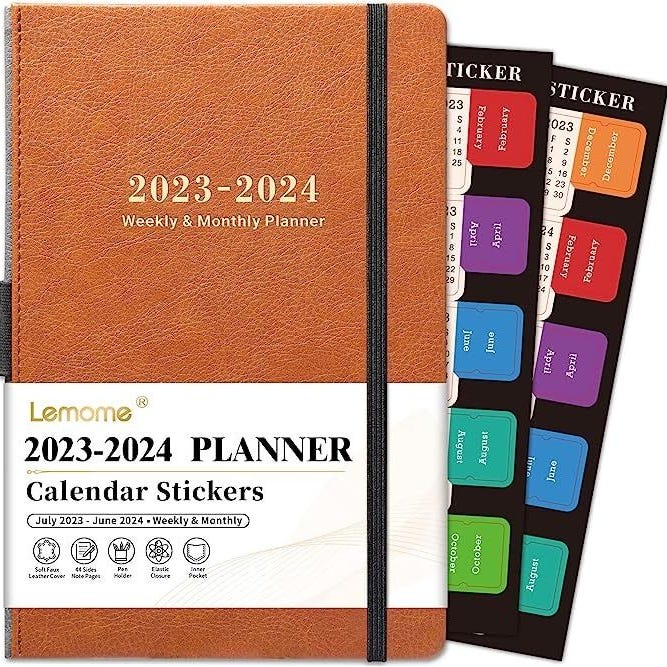
This student planner combines old-school sophistication with modern convenience. The cover design is classically minimal, with an elastic-band closure and pen holder at the spine to keep everything neatly together.
The interior page layout is similarly straightforward, offering weekly and monthly page views with plenty of lined and blank space to write, cross out, and rewrite. The design is unobtrusive, allowing for students to mold it to fit their needs. It's easy to follow with enough direction to keep students on-task, and it's durable enough that if it gets thrown around — which it definitely will — it won't fall apart partway through the year. Overall, the combination of style, durability, and price makes this student planner our number-one pick.
More: 20 High-Quality Backpacks That'll Actually Last All Year
2023-2024 Academic Planner + Study App
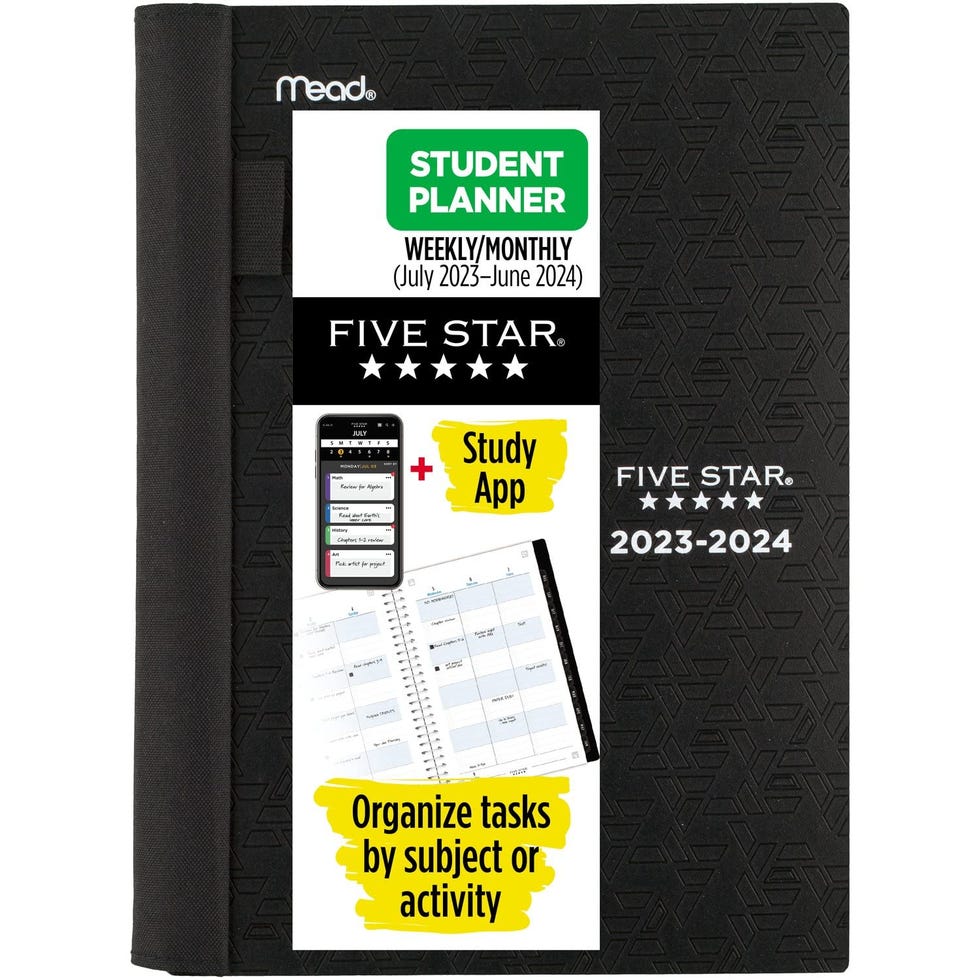
A brilliantly laid out study app comes with the Five Star planner. It's one more way for kids to integrate their digital and analog planning and studying. It's a simple plan with an easy layout to follow, and teens love it. It has daily, weekly, and monthly sections with more than enough room for everything.
Dated Bilingual Middle High School Student Planner

Bilingual English and Spanish planners are wonderful for really any child in the U.S. but especially good for Spanish speakers and Spanish learners. The planner has plenty of guidance as to what to put where and plenty of space in which to do it. It's also a great option for middle school students!
2023-2024 Academic Planner
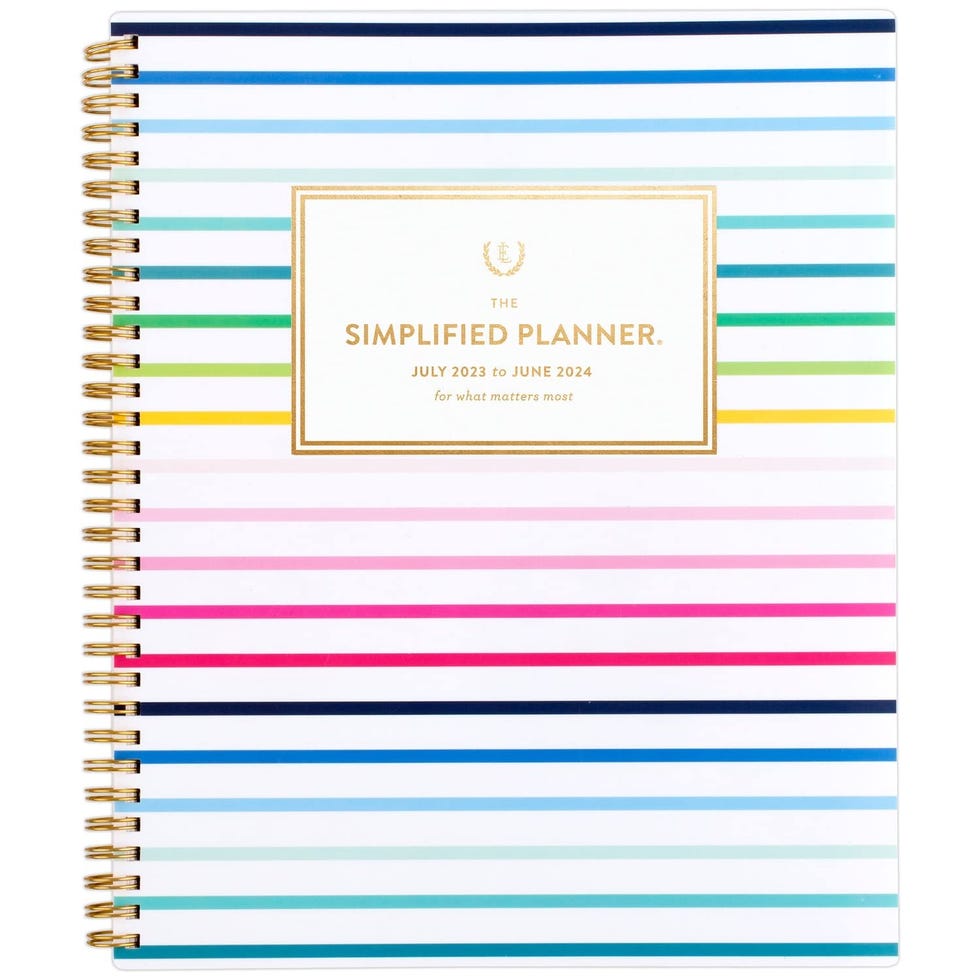
At-a-Glance planners are favorites of teachers I spoke with because they aren't distracting, but they're also very guided and have plenty of room. Even if your child decides to use markers in it, the pages don't bleed like some thinner-papered planners. These lay flat, allowing the student to look at everything at a glance.
Student Planner 2023-2024
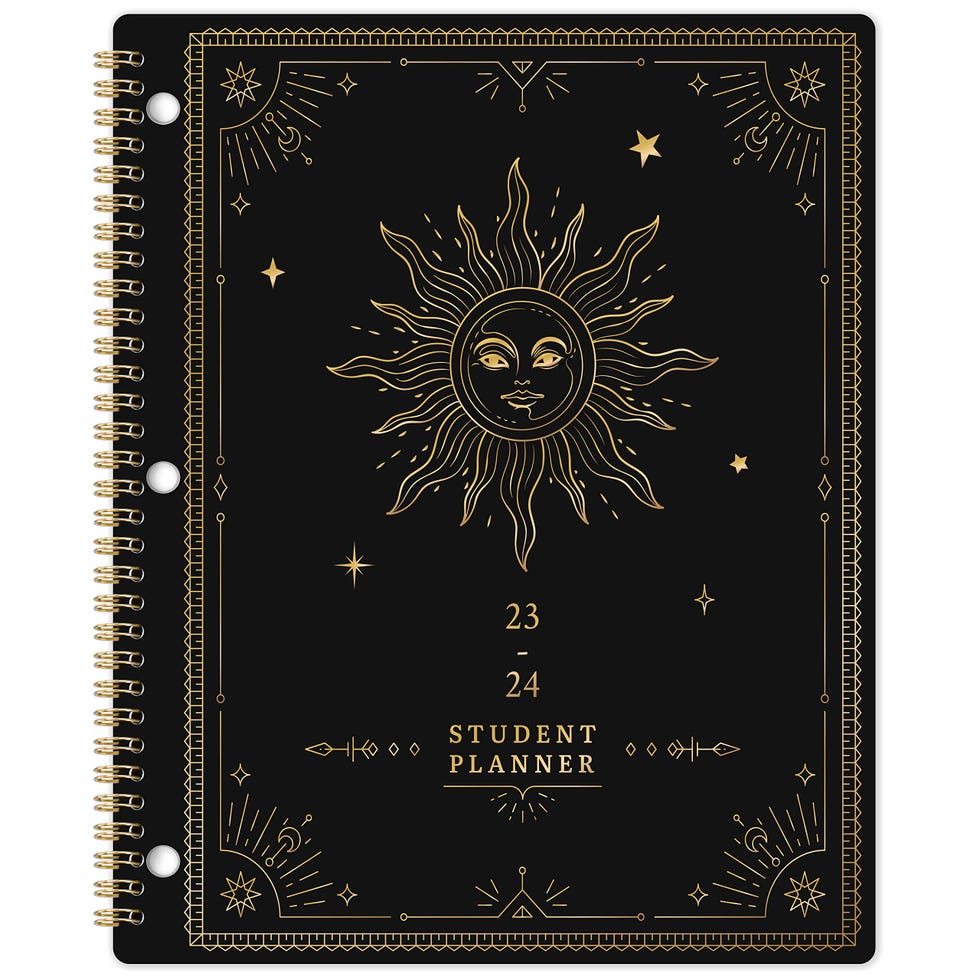
A big part of why this one will be so popular is because of the design on the outside — celestial images are hot right now. But what's inside is even more important, and you'll find a well-laid out planer with 380 stickers, goal areas, weekly, daily, and monthly spaces ready to be filled out.
2023-2024 Monthly Planner
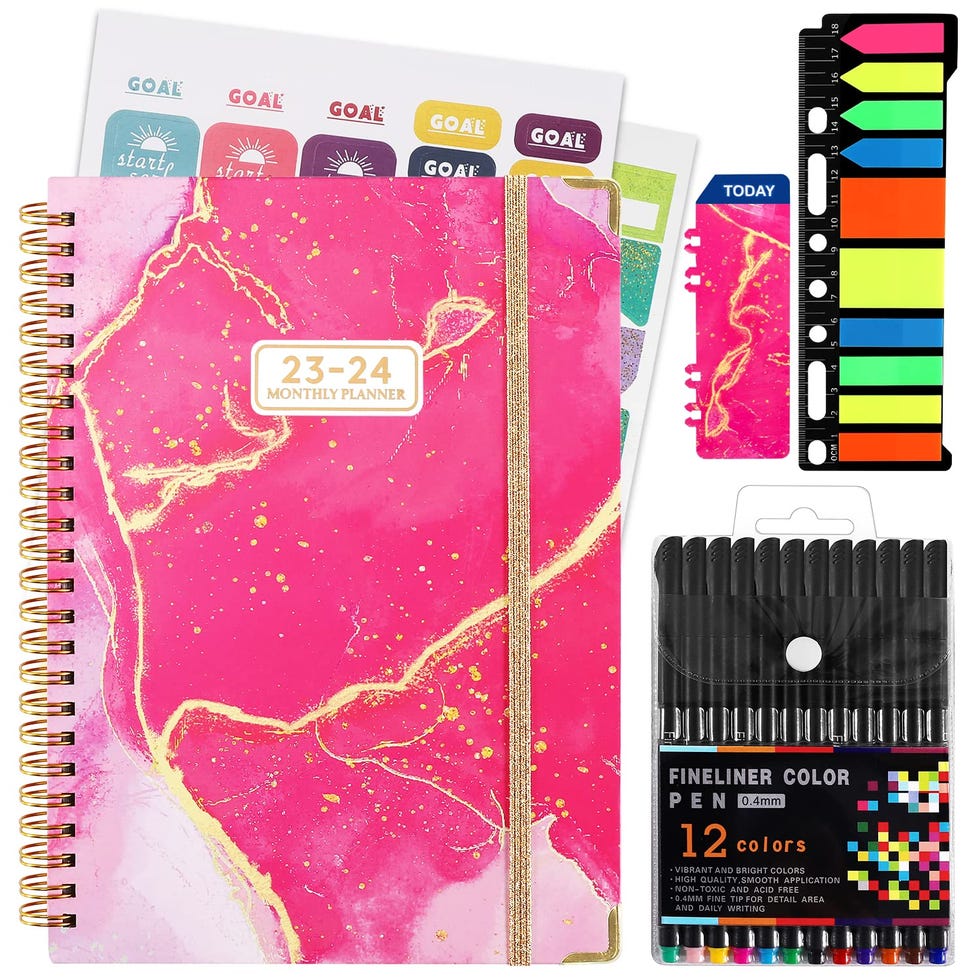
If you need to motivate your student, gifting them a package like this is a wonderful way to do it. It has everything a kid could want for planning, pens, stickers, tabs, and a design that's alluring even for the planner-shy.
Again, it has weekly, daily, and monthly spaces with great paper and lines that aren't too close together.
2023-24 Monthly & Weekly Academic Planner Kit
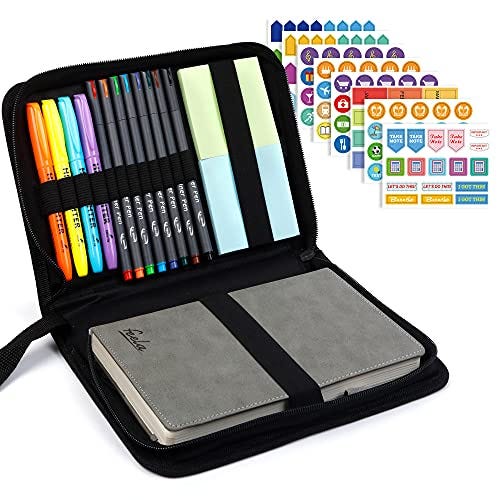
There's so much to love about this extremely durable zippered planner starting with the fact that it's not just an undated planner — it's an entire planner system.
Useful school supplies like fine-liner pens, sticky notes, tabs, note stickers, and highlighters are all included. That means that you can color-code by program or activity, highlight deadlines, coordinate your needs, and get everything put down exactly when you need to begin because you are the one filling in the date.
2023-2024 Academic Year Weekly and Monthly Planner
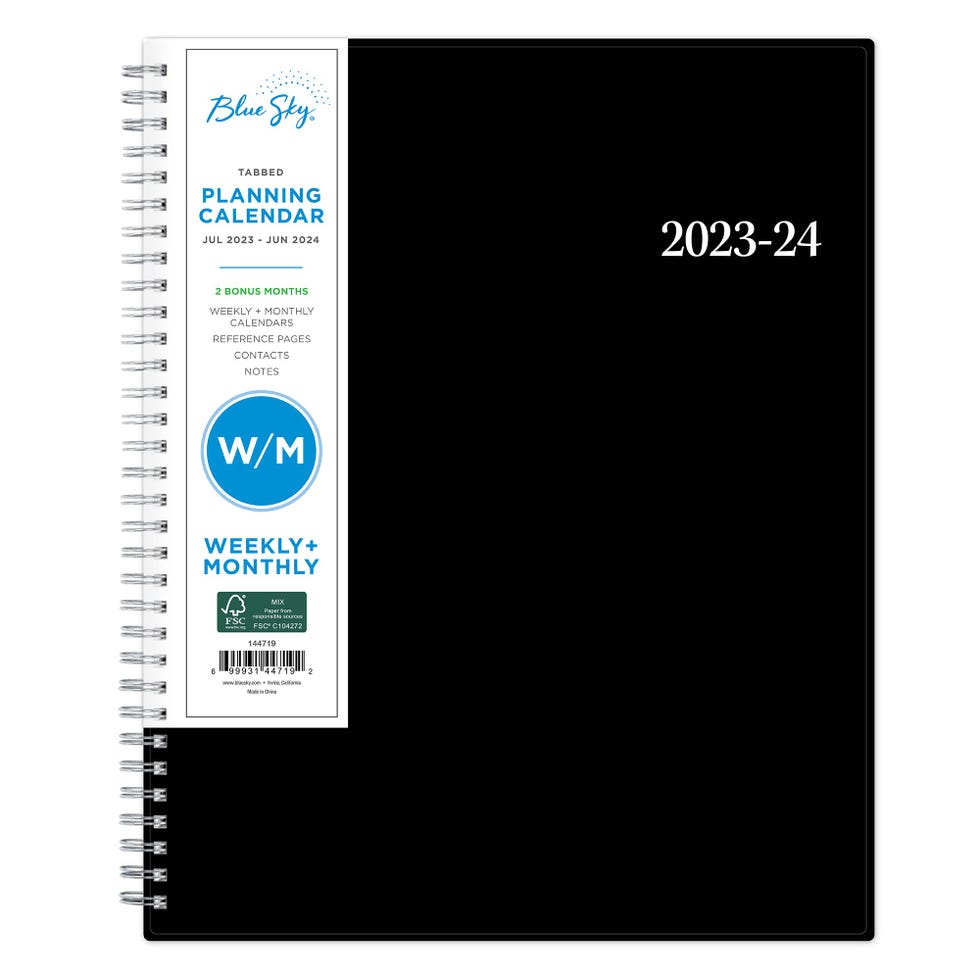
This notebook-sized student planner from Blue Sky helps plan out projects by week while also including a bird's-eye view of the entire month when opened to each tab.
It also provides more than enough space for writing down due dates and monthly appointments, and it lays everything out neatly on a clean-lined spread.
What we love about this one is that it's a smaller size, perfect for the front pocket of a backpack. There's even a section for jotting down yearly goals for the academic year to stay on track through the semesters.
The Jag Academic Planner
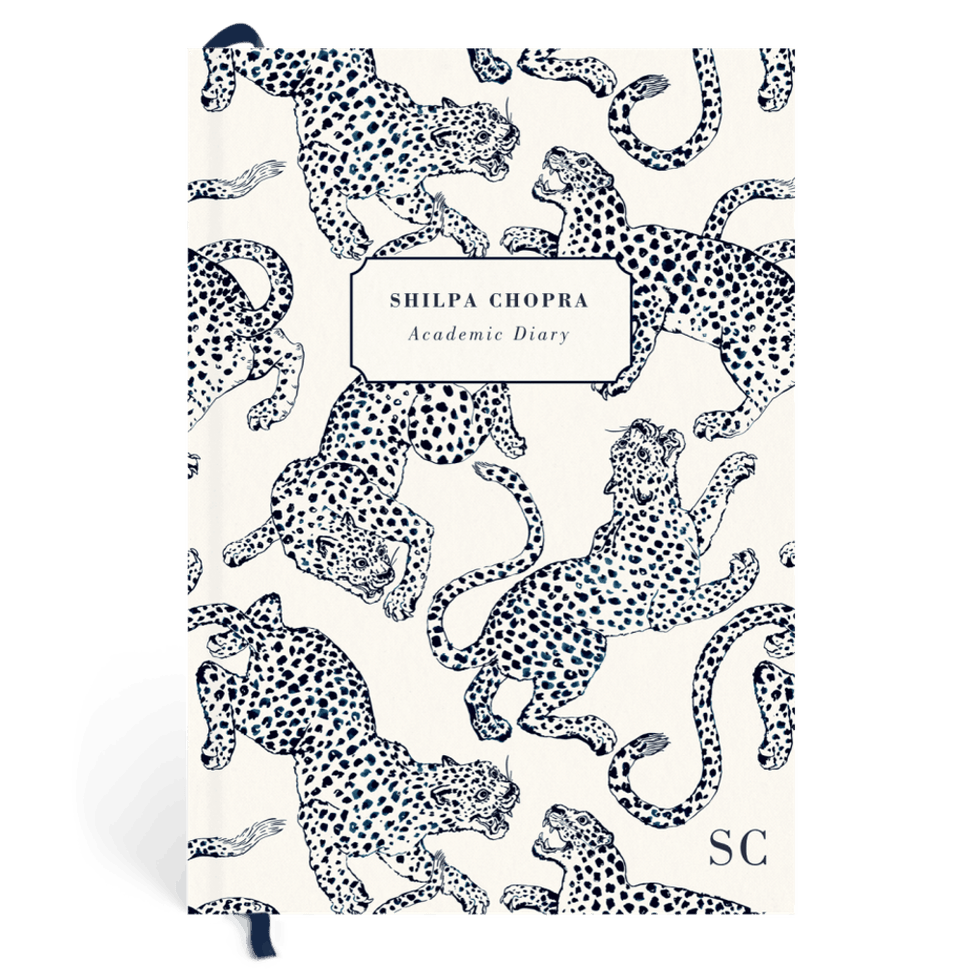
Whether you're a consistent planner user or go weeks without writing down anything, this gorgeous, blank weekly planner is perfect. It feels grown up and ready for adulthood. Each page allows you to fill in the year and the date so that you can plan your way.
With generous space to write down daily tasks, assignments, and social engagements, you'll never miss a beat. Thanks to the sections for goals, important dates, and to-do lists, you'll be the image of productivity and organization.
Panda Reusable Academic Daily Planner
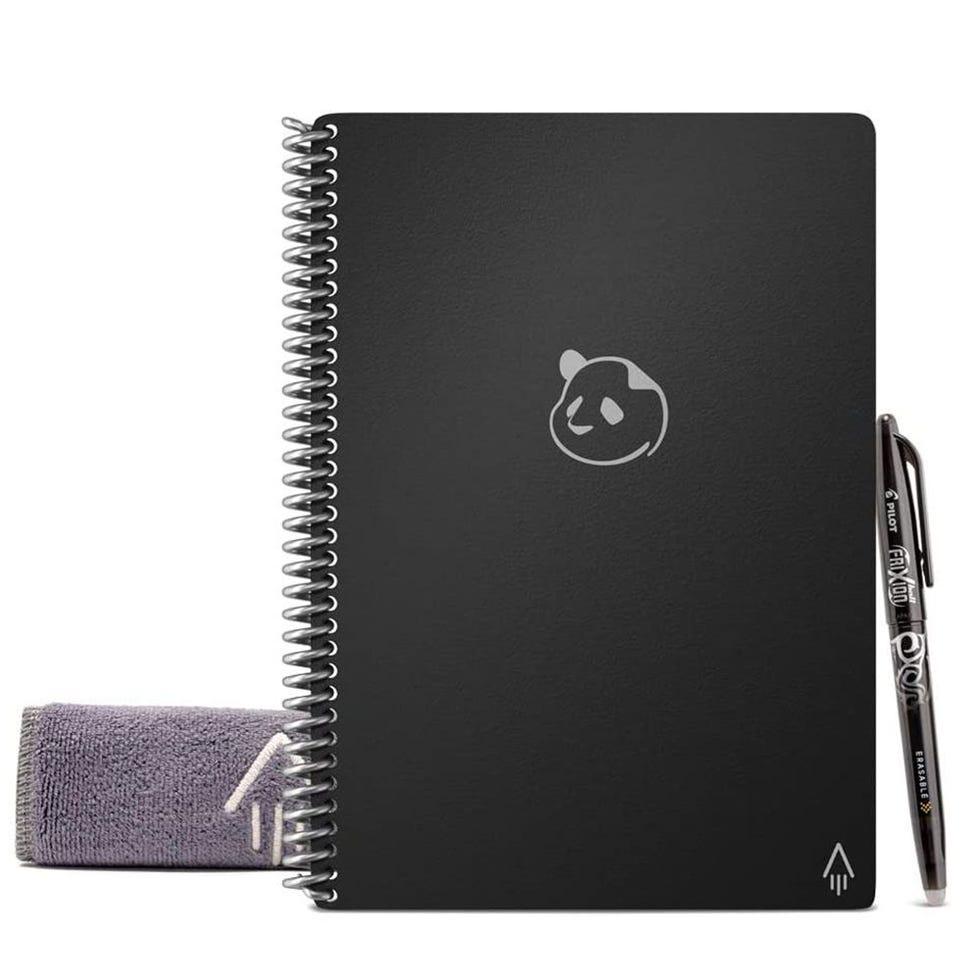
Undated planners are gaining popularity, and this one keeps track of way more than just your day-to-day schedule.
The top-rated Panda Planner includes daily, weekly, and monthly pages, all designed with the goal-oriented user in mind. It helps break big goals into smaller tasks and lets users get as granular as they'd like with long-term planning. This means that you can plan their semester by the week, month, or the whole chunk.
The best part is that the cloud-integrated planner is totally reusable, as users can jot down tasks and notes with the smudge-proof pen, scan them with the compatible app, and erase the notes with the included cloth. It'll likely be the only planner-and-notebook combo that you'll ever need.
Daily Planner 2023-2024
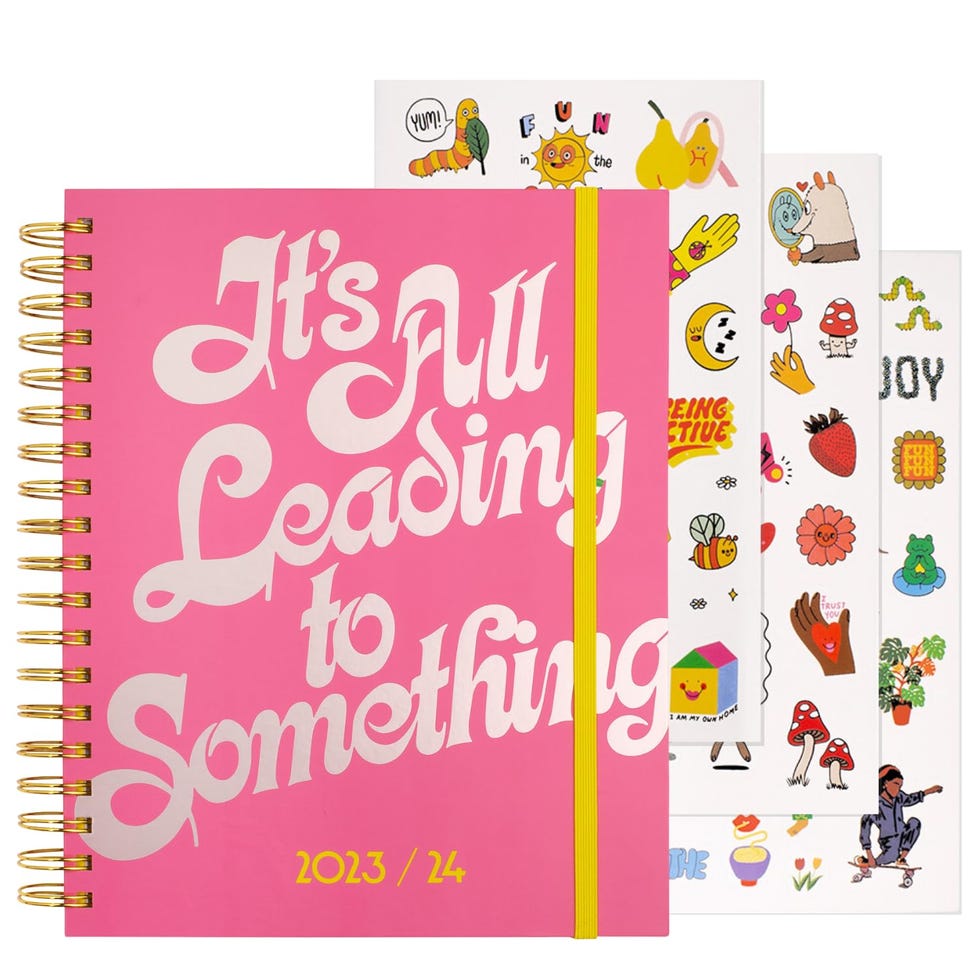
With weekly practices designed to inspire and encourage self-care, you will find this planner to be incredibly useful. Its lined pages are the perfect place to jot down notes, how you're feeling, or your progress and goals for that month. The weekly and monthly view allows you to write down detailed daily plans and broader monthly events.
The color-coded sections make finding a specific month quick and easy. You can design their planner to look as trendy as you want with the chic included sticker pack.
Simple Elephant Planner 2023-2024

Straight to the point and focused on productivity, the Simple Elephant Planner is designed to keep you motivated and ready to achieve your goals.
School is far more than just going to class and going home. The Elephant Planner is designed for everything in between. With weekly and monthly pages, you can keep track of your bigger and smaller assignments.
Your will be setting and completing goals like a pro with the yearly goal tracker. The gratitude and affirmation pages help you shape a mindfulness practice while keeping you focused on what you want to achieve during the academic year. Plus, the mindmap pages allow you to create a mini vision board to engage with your more creative side, which is great for art majors or students involved in theatre.
Watercolor Checkered Academic Planner

In the planner community, many would hail Erin Condren as the brand that ushered them into an organization obsession .
Designed with students in mind, this academic planner has a section to manage projects and exams, pages for notes, and the standard weekly/monthly calendar grid. Customize this planner with your name in eye-catching metallic gold for an added pop.
Erin Condren's planner keeps everything from sorority parties to work study and dissertation dates in their place. It's also easy to find what you need when you need it, thanks to the specific tabbing on the sides.
Hardcover Daily Planner 2023-2024
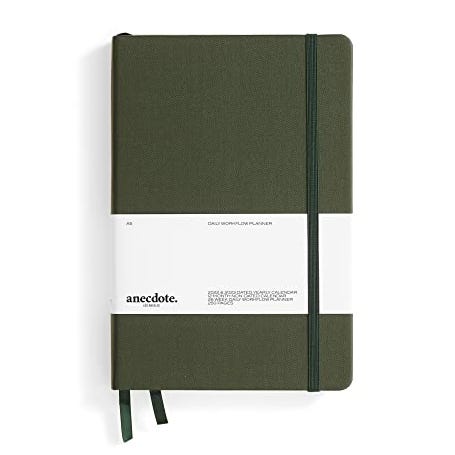
Some of us are all about the low-key aesthetic, and this planner fits the bill. Simple and small enough to toss in your backpack, this planner will get plenty of use.
The weekly planning pages feature boxes to an open plan for dates, allowing maximum customization. Structured to last, the simple planner has a sleek look that is truly unisex and mature.
Planner Set

Who says that using a planner has to be boring? This colorful set comes with everything you need to become a planning pro.
Complete with stickers, pens, and markers, you'll be able to customize their agenda to your exact taste. Each month starts with a page for you to jot down reminders, like phone calls to make and texts to return.
The weekly and monthly view will keep you on top of your assignments, while the included accessories will make writing down homework due dates a bit more fun.
What to Consider

Choosing the right planner for the right person is no small task, especially for college students dealing with the beginning of their life as an adult. There's a lot to jot down when you consider work and school schedules that include not only term-long projects but also goals for the future, grade calculations, and important notes about prerequisites and scheduling. Planners are pretty individual things, so check in with your kid about their preferred style. My own 15-year-old son prefers to have a larger planner with more room because he's visually inclined in that way, but my 12-year-old daughter is just the opposite. Her planner is precise, but notebooks are for figuring things out.
A good student planner should have space not only for assignments but also for schedules, notes, and important email addresses and numbers, such as the At a Glance planner . It's also a good idea to give yourself the option of having multiple views of the dates — a month at a glance, a week, and a daily breakdown. It's not 100% necessary, but it is extremely useful. You also want your student planner to be durable, just like the Feela planner system , because planners get pretty beaten up over time. Think about it — they're thrown in backpacks , tossed into desk drawers, and even jammed into lockers, so they need to stand up to some knocking around. Flimsy is fine for something that stays at home but not for an academic planner that needs to travel.
Cat Bowen has been covering parenting and home for over a decade. At Best Products, she has tested hundreds of products for parents and for the home, often spending dozens of hours per product to ensure her reviews are accurate and informative. Prior to joining the team, she was at Romper where she covered everything from breastfeeding to child sleep habits to abortion rights access. You can find her work on Bustle , Romper , and more. Cat is a bit of an intellectual magpie and perpetual student, most recently receiving a graduate degree in gender studies where she examined a topic that vexes so many — pockets in women’s clothing.
Melanie Yates is the senior service editor of Best Products, where she writes and reports pieces pertaining to the etiquette, dilemmas, and how-tos of gift-giving for different occasions. Previously, she was the site's senior home editor, covering all things decor- and bedding-related since 2015. Her digital byline can also be found on Bustle, House Beautiful , and Elle Decor . A longtime classical-music enthusiast, Melanie spends her off-hours enjoying performances big and small across New York City.
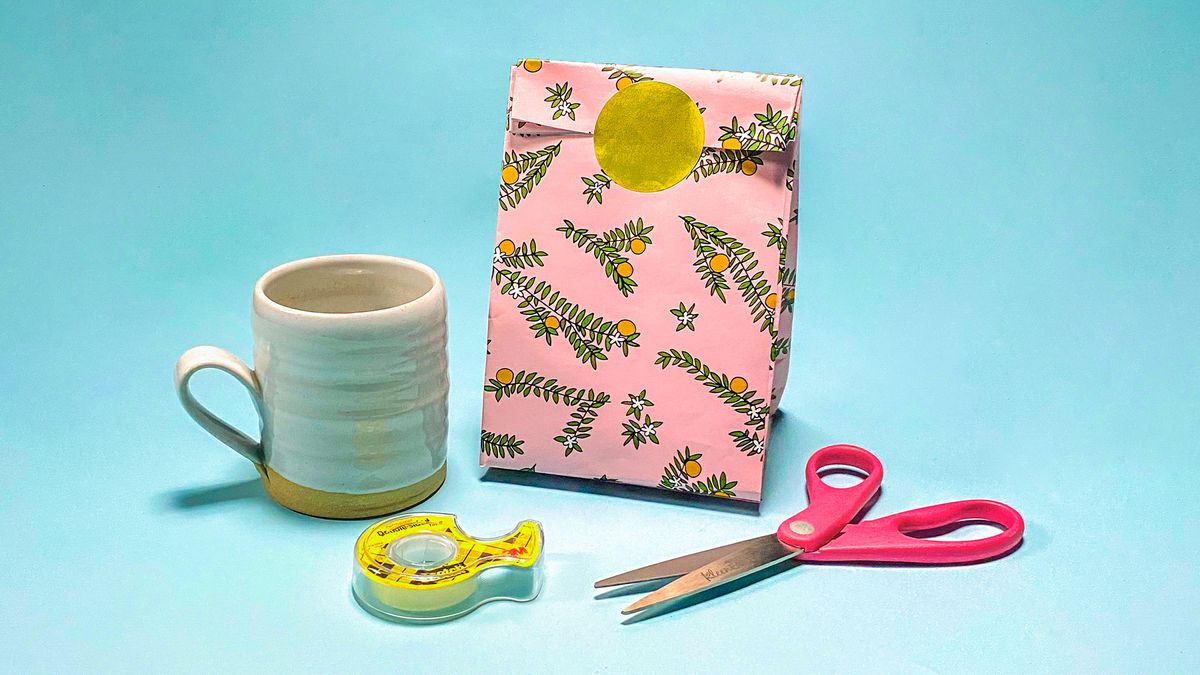
Back to School Supplies
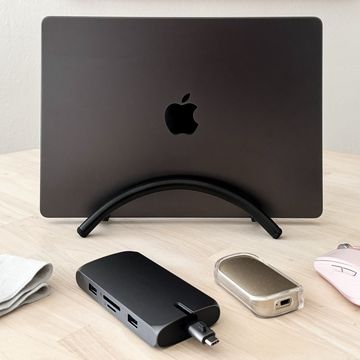
10 Best Apple Charging Stations

The Best Phones for Kids

How to Find the Best Tablet for You

The 8 Best Mini Laptops of 2024
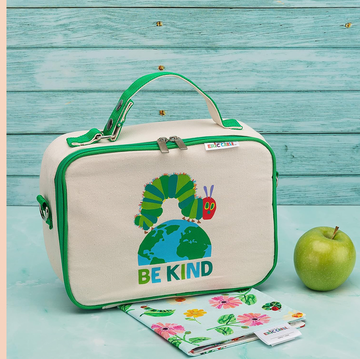
Shop This Epic Amazon Back-to-School Sale of 2023

These Are the Best Laptops for College Students
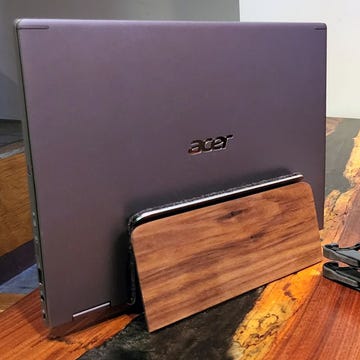
13 Best Laptop Stands and Docks for Your MacBook
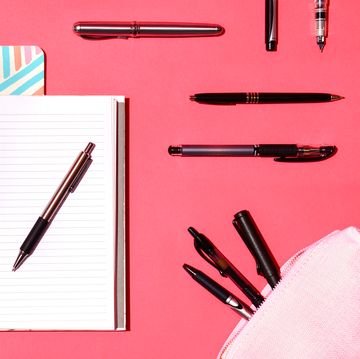
Our Ultimate Guide to the Best Pens Under $25

20 Classroom Decorations to Bring the Room to Life

The Ultimate Back-to-School Shopping Checklist

45+ Dorm Room Ideas to Start Campus Life Off Right
School Mate ®
Student planners.
Change View
We offer 14 Student Planner and Agenda products for 2024-2025 that promote time management and organization in your classroom. Each of our Student Planners undergoes thorough research and design processes to provide the planning and communication features you love and depend on, as well as S T E A M content that is in sync with your curriculum. To help you decide which planner meets your needs, use the filters below to choose the best planner based on grade level, planner size, and features. Still not sure which student planner to order? Watch our video
Filter Planners
Kindergarten
Middle School
High School
8 ⅜" x 10 ¾"
5 ⅜" x 8 ⅜"
By Feature:
Add Your Events
No filters selected. All planners shown.
- Custom Material
- Teacher Aids
- Terms & Conditions
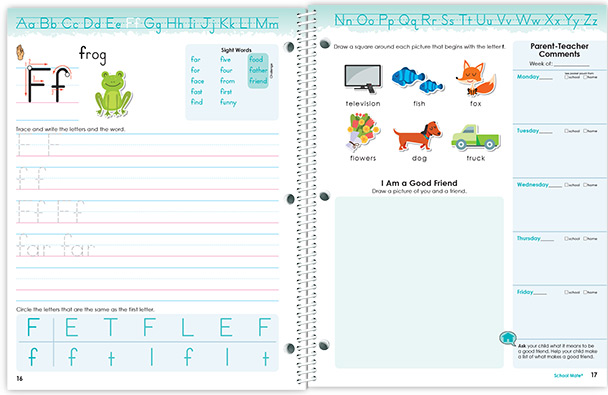
Kindergarten Journal
- 8 ⅜" x 10 ¾" pages
- Alphabet and number activites
- Student resource pages
- 96 full-color pages
- Undated for versatile use
- Features & Pricing
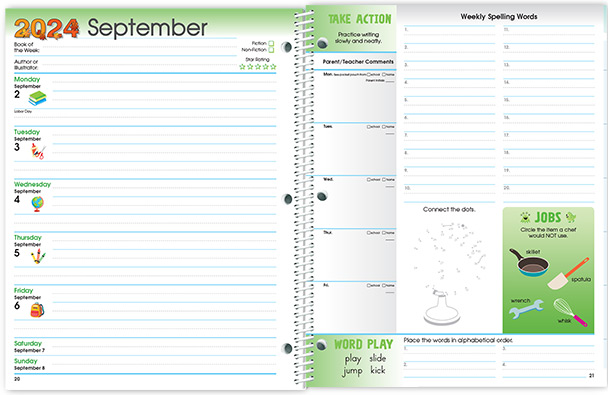
Primary Planner
- Area for 20 spelling words
- 104 full-color pages
- Dated Aug. 5, 2024 - June 29, 2025
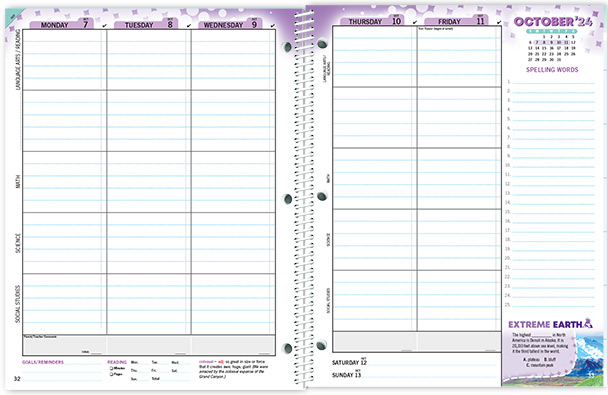
Elementary Planner
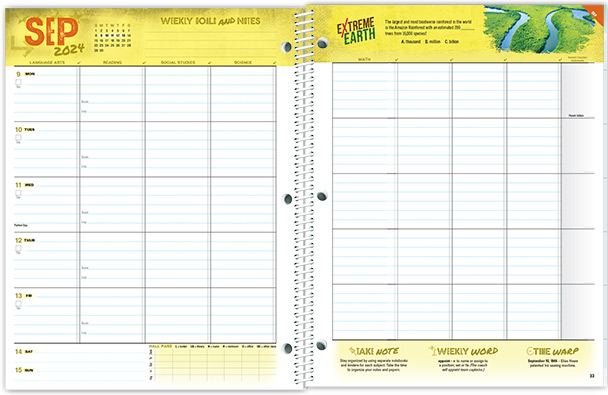
Middle School Planner
- 8 ⅜" x 10 ¾" pages
- 8-subject matrix format
- 112 full-color pages
- Dated July 29, 2024 - June 29, 2025
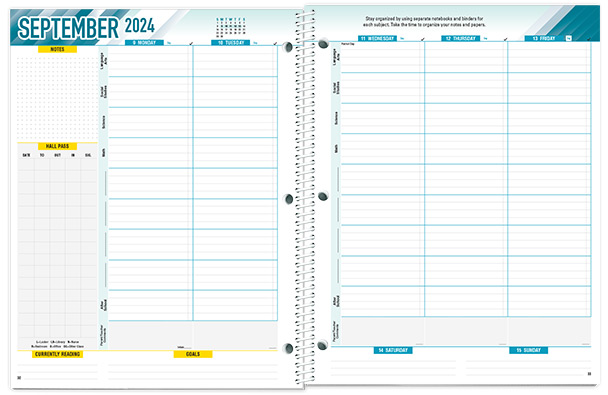
Navigator Planner
- 8-subject weekly matrix format
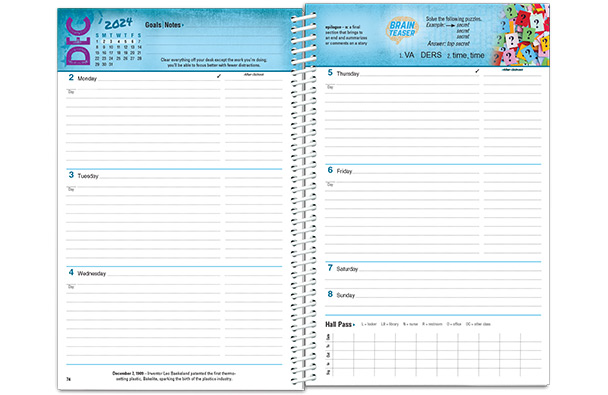
High School Planner
- 5 ⅜" x 8 ⅜" pages
- Allows for block scheduling
- 144 full-color pages
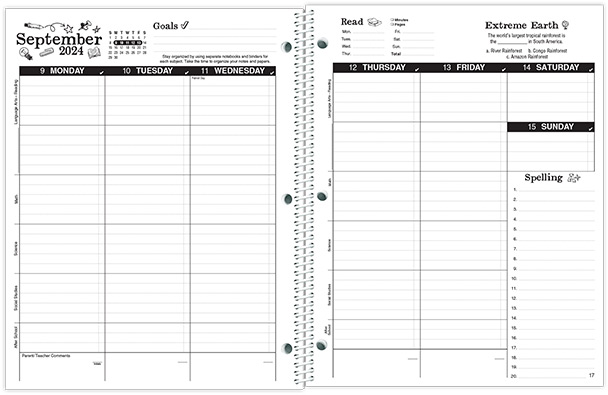
Classic Planner
- Weekly matrix format
- 96 black-and-white pages

Scholar Planner
- Priority check-off boxes
- 128 black-and-white pages
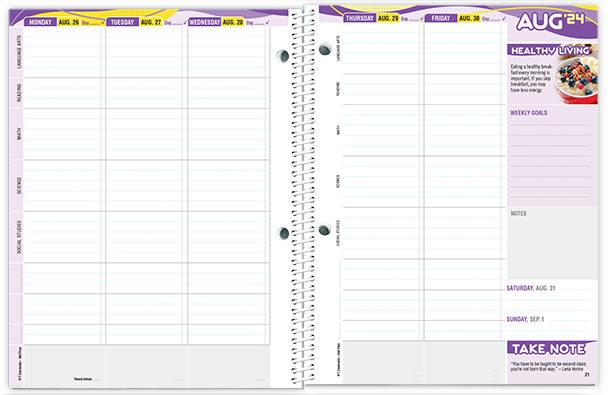
Dated Student Agenda
- 7" x 9" pages
- Weekly goals and notes areas
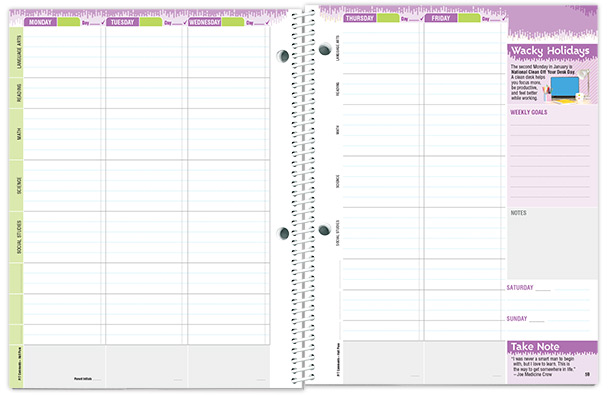
Undated Student Agenda
- Undated - Contains 48 weeks
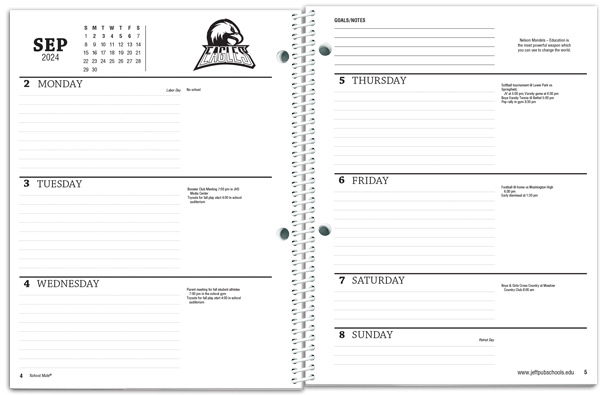
Target School Events
- Choose one ink color for pages - 50¢ each
- 2 customizable formats
- Add school events
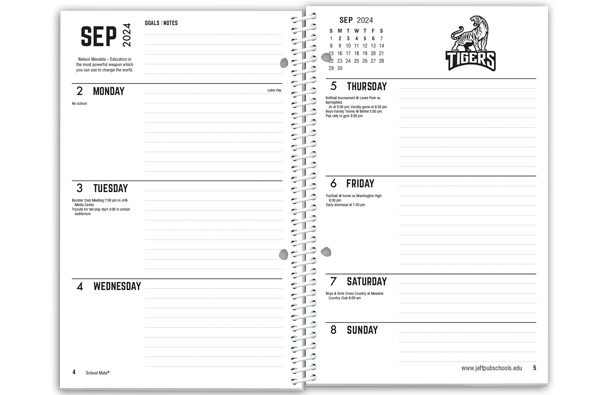
Quest School Events
- Add your school events
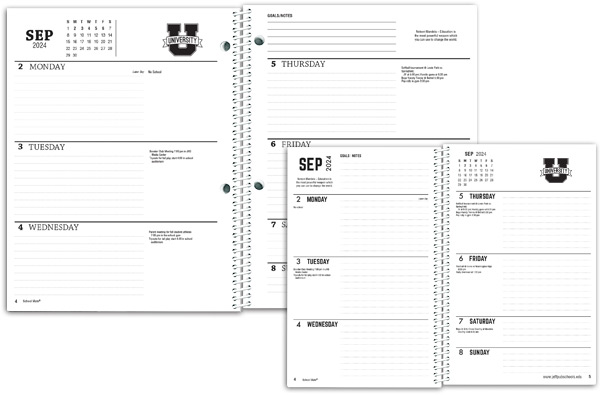
College Planners
- 7" x 9" or 5 ⅜" x 8 ⅜" pages
- 4 customizable formats
- Add your college events
- Size Options
- Our Mission
Projects to Engage Middle School Readers
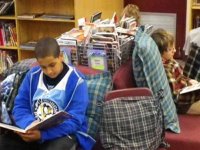
It's my fault. I'll admit it. During my eight years in the classroom, I ruined at least two amazing literary works by assigning horrifically dull reading projects. My only hope is that those middle school students, whose enthusiasm I quashed, found another way to become passionate about literature.
Peanuts raises some interesting questions about the value of reading projects. Does Lucy clearly articulate her understanding of Peter Rabbit ? Does Schroeder have a solid grasp on the concept of narrative? Will Charlie Brown ever want to read another book?
In middle school, we ask students to dissect texts and perform literary analysis. However, that does not mean that we have to limit how we assess their understanding of the books. If the desired learning objective is for students to . . .
- Demonstrate understanding of the plot elements
- Explore the role of tone and theme
- Identify significant scenes or events and their impact on the story
- Analyze a character and show an understanding of that character's motivations
- Explain the relationship between the author's life and the story
. . . does it have to be an essay or book report ?
Book Trailers
In the spirit of movie trailers, book trailers allow students to create video advertisements to entice new readers. Not only do these projects ensure that students have a firm grasp on the story's plot, setting, theme and main characters, but they also provide an opportunity to address persuasive writing as well as digital literacy concepts like copyright and publishing.
Students could use iMovie or Animoto to create and publish their videos. In fact, iMovie includes a set of pre-built trailer templates, and Ben Schersten ( @benschersten ) created a great set of PDF storyboards for students to use in planning those projects. Both iMovie and Animoto allow students to focus on the content, as they greatly simplify the editing process. Ann Feldmann's sixth graders produced a great set of examples . By incorporating their own drawings and writing instead of searching for images or shooting live video, the technology became a medium through which they could really engage with the literature.
On a foggy fall day, I took my ninth graders outside to sit on the porch while I read "The Tell-Tale Heart," tapping heartbeats on the deck and playing off the ominous weather. They hung on every word, engrossed in Edgar Allen Poe.
Leveraging the recording capabilities of most computers and mobile devices, students could explore the role of tone and sound by creating podcasts in the fashion of old-school radio shows. Using Garageband , Audacity , AudioBoo or any other sound recorder, students can retell portions of stories, complete with background music and sound effects, to demonstrate their understanding of tone, setting and theme, as well as practice their reading fluency.
Choose Your Own Adventure
My middle school students struggled with identifying and comprehending the concept of foreshadowing. They didn't readily see how certain moments or scenes could impact later events. By allowing students to recreate the story as a "choose your own adventure" tale, they have the opportunity to map out not only the original story but also a new one, identifying significant events or images and their impact on the story.
Within the Book Creator app , students can build e-books with text, images, drawing, audio and video. Since inserted images can be hyperlinked to specific pages, students could create interactive stories. Jonathan Wylie ( @jonathanwylie ) describes a similar approach in his blog using a combination of Google Forms and Google Presentations. Either one of these options encourages students to identify significant moments from a book and illustrate their relative impact on the overall plot.
Illustrated Character Analysis
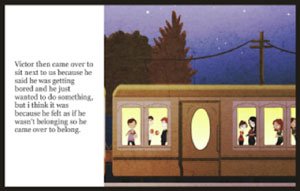
Atticus Finch tells Scout in To Kill a Mockingbird , "You never really understand a person until you consider things from his point of view -- until you climb into his skin and walk around in it." In order to see whether or not your students truly comprehend the characters, encourage them to create a new scene and put those characters in the middle of it -- to take a walk in their shoes.
Storybird allows students to choose from hundreds of illustrations in order to create their own stories. As illustrated by Cybenglish , students could show their understanding of characters by placing them in new scenes in order to reveal their motivations.
Augmented Reality Author Studies
When my eighth graders read Night , they also conducted historical research into the life of Elie Wiesel to better understand the context of the book as well as the author's account. These studies turned into small research papers to which my students had hardly any personal connection beyond having completed an academic task.
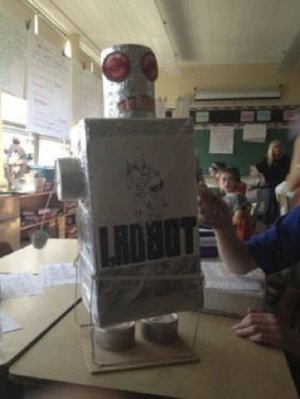
On the other hand, Elissa Malespina ( @SOMSLibrary ) constructed a completely different experience for her students. At the culmination of their author study, her students created Animoto videos which they then turned into "auras" with Aurasma , an augmented reality app. To do this, students created trigger images representing either the author or a character from the book, which their classmates scanned in order to watch the videos. In the end, not only did these students articulate the relationships between the authors and the stories, constructing an immersive experience for the rest of the class, but they also contributed their knowledge to a broader community.

Vision of an Engaged Middle School Reader
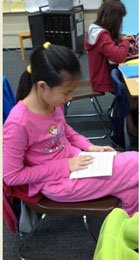
How many middle school readers have you seen who look as engaged as the children in this picture?
If the true learning objective is to ignite a student's passion for literature and provide an opportunity to demonstrate understanding through a variety of modalities, then maybe it's time to move beyond the book report.

Hopefully Home
craft · teach · live · grow

12 Creative Book Report Projects Your Students Will Love
Whether you’re teaching a whole-class novel, or finishing a round of independent reading or literature circles, post-reading assessments are always more engaging when they’re more than just a test or essay.
Below, you’ll discover a dozen fun book report ideas for your middle or high school ELA students, curated by a team of experienced English teachers.
Choose your favorite projects to offer to students as options on a book report project choice board.

Create a Board Game
When I gave “create a board game about the book you read” as a book report option for my students, I was pleasantly surprised at the results! Quite a few students excitedly chose this option and created some really fun-looking games centered on their books.
This is a great project choice if you’re looking for something that students can’t create by just Googling the book.
Here are some tips and suggestions for assigning a board game book report:
- Give clear parameters and requirements to keep students on track, such as requiring game elements to represent certain literary elements of the book they read.
- Provide suggestions for game components and materials – encourage students to consider the game play and elements of their favorite board games and to use materials they already have at home to create them.
- For a whole-class novel study, consider allowing students to work in teams to create the novel-based board games, then setting aside a class period for students to play each others’ games and see who wins!
If you’re looking to save time… clear directions handouts, lots of suggestions, and a handy grading rubric for a board game post-reading assessment are all included in this resource . Take a look!
For more independent reading response ideas, check out this post with ideas for fun post-reading projects.

Create a Journey Box
Engaging students in authentic conversations about books is a passion for Carolyn of Middle School Café . In traditional oral book reports, students simply get up in front of the class and read a summary of the book they read. Carolyn found this method of oral book reports painful for both her and her students.
Wanting to find a way to help her students talk about their book and keep her class engaged, Carolyn began incorporating Journey Box Book Reports. A journey box is a shoebox (or bag) that contains artifacts from the story that help the reader share important events from the story.
Students predetermine what events of the story are most important to share, then they create an artifact to share with the class or small group as they explain the plot. As an example, Carolyn had a student who read The Diary of Anne Frank. He created a small 3D tree that he displayed on the desk as he shared about how Anne looked out the window and dreamed of her former life. It’s a small piece of the story that helps the student explain the plot point and gives the audience something visual to look at and stay engaged.
Journey Box Book Reports have been successful for Carolyn in both her middle school and high school classrooms. She does suggest, if using Journey Boxes in older grades, to have students share their stories in small groups.

Create a Literary Food Truck
If there’s one thing kids love, it’s food – especially high schoolers – and with this in mind, one of Simply Ana P’s favorite ways to recap a class novel or an independent reading unit is with Literary Food Trucks. This is definitely not a new idea, but it’s one that will have you coming back for seconds 🙂
Ana first tried this project at the end of The Odyssey , where students were able to decide which book(s) they wanted to make the focus of their trucks. The main requirement was that every single choice made had to be intentional and clearly relevant. With this in mind, students could start the planning process.
You can make the truck’s requirements as simple or as detailed as you prefer, but Ana recommends having students plan:
- Truck name, design, and branding colors
- Menu design and items (5 items minimum)
- Employee uniforms
- Merch
Ana includes a writing component by having her students defend all of their selections in the form of a proposal. This is later used in their presentations, and the better (more intentional) their proposal is, the more likely they will win the class vote. This proposal can be anywhere from a few paragraphs to a few pages, depending on what writing goals you have for them, and should definitely include text evidence.
Part of the beauty of this type of project is that it can be done digital or paper-based. Ana likes to walk her students through a Canva tutorial, where there are even menu templates that students can use so they don’t feel overwhelmed starting from scratch. Or, for more creative students, they can create their trucks on chart paper, poster board, or even 3D dioramas. After students finish making their food trucks, it’s always fun to take a day for the in-class Food Festival, where students are invited to bring in items from their menus or simply some type of snacks. Some students get super hype about this day and even make/wear aprons or themed employee uniforms. Students are able to walk around, visiting each of their trucks, and casting their votes for Best Food, Most Relevant, and Most Detailed. Have fun and bon appetit !

Create a Mood Board
It can be hard to come up with creative post-reading assessments for your students when they’re done with a full class novel, literature circles, or a choice reading unit. In an attempt to combine 21 st century skills with literary analysis, Samantha from Samantha in Secondary decided to try something a little different. Enter: The Mood Board.
A mood board combines images to elicit a feeling from a viewer much like a writer does with words. The possibilities for using a mood board with your class are endless. Students can create a mood board for an overall book, a character, an event, a theme, a poem, etc. Then, have your students carefully curate a board that is aesthetically pleasing and considers color, space, and design in the execution. As students explain why they’ve made the choices they have, the upper-level thinking comes naturally.
Canva is an excellent tool to use to create your mood boards. Having students interact with software they may be unfamiliar with is a meaningful learning experience in and of itself. If you want to learn more about how to use mood boards in your own classroom, click here to read Samantha’s blog post about it or check out the resource she created that includes done-for-you student instructions, examples, and a rubric here .

Create a New App
How would a character’s life change if there was just the perfect app to solve their conflict??
This is the question Krista from @whimsyandrigor poses to her students as they finish a novel and begin to reflect on the character’s journey. Students begin by discussing all of the details surrounding the protagonist and what they experienced. In small groups and in whole-class discussions, students discuss the conflicts, both internal and external, and then brainstorm all of the realistic and not-so-realistic ways the character could have addressed their problems.
Once students have generated a healthy list of ideas, Krista tells them they get to become an app developer and they must create an app that would greatly benefit a character from their reading.
The requirements are:
- The app cannot already exist.
- The app can be totally unrealistic/not probable.
- The app developer must be able to explain how its features would benefit the character.
- The developer must also create an icon for the App Store.
Here is a print-and-go handout students use to get designing.
Here are some example apps students could create: to help Will from Jason Reynolds’s Long Way Down , maybe an app that predicts his future would help him decide what to do once he steps off the elevator. Or maybe Romeo from Shakespeare’s Romeo and Juliet would have benefited from a life-detection app that would accurately determine whether or not someone was actually dead.
When students sette on the conflict they want to address and the app that would help, they write a Spill the TEA paragraph, as explained by Krista in this YouTube video . Using this paragraph organization strategy, students will introduce their app, use evidence to explain how it is necessary for the character, and explain how the app would have benefited or changed the protagonist’s journey.
Now they get to be a graphic designer as they design the app’s icon. Students may want to peruse the actual App Store to get ideas about how an icon is designed, what elements must be present, and how to create something that is eye-catching.
If space allows, Krista encourages you to display the icons and Spill the TEA paragraphs in the hallway for other students to see the in-depth critical thinking and character analysis your students did after finishing a novel.
Who says technology is only a distraction for our students?! This activity proves technology can help students dive deep into a text and its characters!

Write a Vignette
Lesa from SmithTeaches9to12 often focuses on character-based activities for novel studies including a character profile activity , character conversations through text messages , or the writing of a good vignette.
Vignettes can be a great way to assess students’ literary analysis skills and understanding of the text. Students write a short piece of about 500 words that is descriptive of a particular moment in time focusing on one of the book’s characters. These moments could be placing the character in a new setting, writing about a particular moment in the story that was less developed, or even extending to a moment beyond the book’s conclusion. Lesa provides students with some mentor texts, including “My Name” by Sandra Cisneros in The House on Mango Street or “The Prisoner Van” by Charles Dickens in Sketches by Boz or even one from a novel being read in class. Review the stories for structure, language choice, sentence structure, use of figurative language, and so on. This helps to co-create the criteria for the assignment. Then students write their own vignette. Build in some peer review as an accountability piece and voila!

Create a Character Collage
It’s safe to say that most English teachers have a bin of cut-up magazines somewhere in their classrooms. While these tattered copies of People and Us Weekly have definitely seen better days, they live on in the many collage creations of our students.
Katie from Mochas and Markbooks loves to use collages as visual representations of comprehension. After reading a novel or short story, creating a character collage to show how a character has evolved from beginning to end requires students to use higher order thinking skills to analyze, synthesize and demonstrate their understanding of characterization by dividing their page in half and choosing words and images to represent the character at the start and conclusion of the story on each side.
The results will show the depth of your students’ interpretation of character as well as their ability to use critical and creative thinking skills to represent their knowledge.
Other ways to use this idea instead of showing character evolution are to show two different sides to a character, for example, who they are with different people in their lives.
If you are looking for other ways to incorporate collage and magazines into your post-reading assessments, check out this blog post for more ideas!

Design Shoe Charms
Crocs are not Olivia ’s shoe of choice, but when she noticed her students bedazzling their plastic footwear with shoe charms, it was a learning opportunity she just couldn’t pass up. Here’s how to make it work in your classroom:
First, have your students choose a character from the book they have finished reading. Then encourage them to find quotes from the book that reveal the character’s interests, values, or personality. Once they have found their quotes (she has her students find 4), tell them to design and color shoe charms that represent those interests, values, or personality traits. This helps students with inferencing, textual evidence, and even symbolism!
When your students have finished making their shoe charms, they can either tape the charms to their shoes for a fabulous, foot-themed fashion show, or they can glue them to a picture of a Croc for quirky classroom décor. Check out this Instagram post to see the charms Olivia’s students came up with!

Create a Movie Poster
When was the last time you went to the movies? Did you notice the posters along the way? If yes then you have walked down the movie studio promotional lane. Like trailers, studios create movie posters to grab the attention of movie-goers before they even enter the theater. Yes, you may have already purchased your movie ticket, but those posters were created for the future. After you finish watching Sonic 2 , what movie will you see next? You probably already pointed to that poster on the way into the theater and said, “That looks like it is going to be good. I want to see that!” As a post reading idea, Sharena from The Humble Bird Teacher has her students create movie posters based on the text read in class. This allows her to complete a formative assessment on what the students learned from the text. Before having her class create a movie poster, she shows them examples of posters from different genres such as drama, action, family-friendly, and comedy. Then she hands out a piece of construction paper and goes over the basic requirements. On the movie poster, the students are required to have their actors names or image (characters), the title of the movie, a visual (setting or symbol from the story), and a tagline, and a short two to three sentence summary of the movie. Once her students are finished with the assignment, she displays them outside the classroom, so the students can have their own movie studio promotional lane. If you are looking for more after reading ideas, click here .

Try Novel Engineering
Whether you’ve been hoping to collaborate with another department, or just really want to try something new, Novel Engineering is an amazing way to get students thinking outside of the box ! Staci from Donut Lovin’ Teacher has found that Novel Engineering requires students to actively comprehend and interact with a novel and get creative about how to help improve the lives of characters! Basically, students work to create a product that will help solve a character’s problem. Here’s how it works…
Before reading : Choose a narrative text where the character faces tangible conflicts. Model and practice the design process in small ways. Try using picture books like Mucha! Muncha! Mucha! in order for students to see and practice what they’ll be doing with a text at grade-level.
While reading : Emphasize the conflicts characters face and give students time to brainstorm possible products that would help solve said problem. Make sure students record evidence from the text so they can later justify the need for the product they design.
After reading : Give students time to draft, craft, and improve their designs that will help solve a problem faced by a character. You can give students options where they draw their creation, make their creation, or even plan a digital app like this, depending on time and resources. Whatever you choose, students will be sure to be pushed to use some skills they may not always practice in an ELA classroom!
Staci has some FREE Novel Engineering Digital Planning Pages or you can read more about her experience with novel engineering on the Donut Lovin’ Teacher blog .

Create a Tik Tok Video
How many times have you passed a group of students filming a TikTok in a hallway? Have you had students ask to film in your class once they finish assignments? You are not alone. Students love TikTok and Yaddy from Yaddy’s Room has figured out how to get students using TikTok for academic purposes!
Yaddy likes to challenge students to create TikTok videos that track a character’s development, encapsulates the main theme of the story, or that exemplifies a key conflict. These easy, low stress videos are great at getting even reluctant students to participate.
To incorporate TikTok videos as a means of assessing students after a novel or story, try the following steps:
1) Get students to brainstorm which part of the novel they would like to use for their video.
2) Ask students to start combing TikTok for an audio that fits with the portion of the text they chose
3) Ask them to plan out how they will realize their vision
4) Rehearse and film!
5) Bonus: ask students to upload their videos to Google Drive and share the link with you so that you can make QR codes to post around your classroom!
Want to get started using TikTok videos for book reports? Check on Yaddy’s free planning sheet here !
Published by admin
View all posts by admin
I'd love to hear from you! Cancel reply
Find something you liked? Share the love!

How to Write a Book Report
Use the links below to jump directly to any section of this guide:
Book Report Fundamentals
Preparing to write, an overview of the book report format, how to write the main body of a book report, how to write a conclusion to a book report, reading comprehension and book reports, book report resources for teachers .
Book reports remain a key educational assessment tool from elementary school through college. Sitting down to close read and critique texts for their content and form is a lifelong skill, one that benefits all of us well beyond our school years. With the help of this guide, you’ll develop your reading comprehension and note-taking skills. You’ll also find resources to guide you through the process of writing a book report, step-by-step, from choosing a book and reading actively to revising your work. Resources for teachers are also included, from creative assignment ideas to sample rubrics.
Book reports follow general rules for composition, yet are distinct from other types of writing assignments. Central to book reports are plot summaries, analyses of characters and themes, and concluding opinions. This format differs from an argumentative essay or critical research paper, in which impartiality and objectivity is encouraged. Differences also exist between book reports and book reviews, who do not share the same intent and audience. Here, you’ll learn the basics of what a book report is and is not.
What Is a Book Report?
"Book Report" ( ThoughtCo )
This article, written by a professor emeritus of rhetoric and English, describes the defining characteristics of book reports and offers observations on how they are composed.
"Writing a Book Report" (Purdue OWL)
Purdue’s Online Writing Lab outlines the steps in writing a book report, from keeping track of major characters as you read to providing adequate summary material.
"How to Write a Book Report" ( Your Dictionary )
This article provides another helpful guide to writing a book report, offering suggestions on taking notes and writing an outline before drafting.
"How to Write a Successful Book Report" ( ThoughtCo )
Another post from ThoughtCo., this article highlights the ten steps for book report success. It was written by an academic advisor and college enrollment counselor.
What’s the Difference Between a Book Report and an Essay?
"Differences Between a Book Report & Essay Writing" ( Classroom)
In this article from the education resource Classroom, you'll learn the differences and similarities between book reports and essay writing.
"Differences Between a Book Report and Essay Writing" (SeattlePi.com)
In this post from a Seattle newspaper's website, memoirist Christopher Cascio highlights how book report and essay writing differ.
"The Difference Between Essays and Reports" (Solent Online Learning)
This PDF from Southampton Solent University includes a chart demonstrating the differences between essays and reports. Though it is geared toward university students, it will help students of all levels understand the differing purposes of reports and analytical essays.
What’s the Difference Between a Book Report and a Book Review?
"How to Write a Book Review and a Book Report" (Concordia Univ.)
The library at Concordia University offers this helpful guide to writing book report and book reviews. It defines differences between the two, then presents components that both forms share.
"Book Reviews" (Univ. of North Carolina)
The University of North Carolina at Chapel Hill’s writing guide shows the step-by-step process of writing book reviews, offering a contrast to the composition of book reports.
Active reading and thoughtful preparation before you begin your book report are necessary components of crafting a successful piece of writing. Here, you’ll find tips and resources to help you learn how to select the right book, decide which format is best for your report, and outline your main points.
Selecting and Finding a Book
"30 Best Books for Elementary Readers" (Education.com)
This article from Education.com lists 30 engaging books for students from kindergarten through fifth grade. It was written by Esme Raji Codell, a teacher, author, and children's literature specialist.
"How to Choose a Good Book for a Report (Middle School)" (WikiHow)
This WikiHow article offers suggestions for middle schoolers on how to choose the right book for a report, from getting started early on the search process to making sure you understand the assignment's requirements.
"Best Book-Report Books for Middle Schoolers" (Common Sense Media)
Common Sense Media has compiled this list of 25 of the best books for middle school book reports. For younger students, the article suggests you check out the site's "50 Books All Kids Should Read Before They're 12."
"50 Books to Read in High School" (Lexington Public Library)
The Lexington, Kentucky Public Library has prepared this list to inspire high school students to choose the right book. It includes both classics and more modern favorites.
The Online Computer Library Center's catalogue helps you locate books in libraries near you, having itemized the collections of 72,000 libraries in 170 countries.
Formats of Book Reports
"Format for Writing a Book Report" ( Your Dictionary )
Here, Your Dictionary supplies guidelines for the basic book report format. It describes what you'll want to include in the heading, and what information to include in the introductory paragraph. Be sure to check these guidelines against your teacher's requirements.
"The Good Old Book Report" (Scholastic)
Nancy Barile’s blog post for Scholastic lists the questions students from middle through high school should address in their book reports.
How to Write an Outline
"Writer’s Web: Creating Outlines" (Univ. of Richmond)
The University of Richmond’s Writing Center shows how you can make use of micro and macro outlines to organize your argument.
"Why and How to Create a Useful Outline" (Purdue OWL)
Purdue’s Online Writing Lab demonstrates how outlines can help you organize your report, then teaches you how to create outlines.
"Creating an Outline" (EasyBib)
EasyBib, a website that generates bibliographies, offers sample outlines and tips for creating your own. The article encourages you to think about transitions and grouping your notes.
"How to Write an Outline: 4 Ways to Organize Your Thoughts" (Grammarly)
This blog post from a professional writer explains the advantages of using an outline, and presents different ways to gather your thoughts before writing.
In this section, you’ll find resources that offer an overview of how to write a book report, including first steps in preparing the introduction. A good book report's introduction hooks the reader with strong opening sentences and provides a preview of where the report is going.
"Step-by-Step Outline for a Book Report" ( Classroom )
This article from Classroom furnishes students with a guide to the stages of writing a book report, from writing the rough draft to revising.
"Your Roadmap to a Better Book Report" ( Time4Writing )
Time4Writing offers tips for outlining your book report, and describes all of the information that the introduction, body, and conclusion should include.
"How to Start a Book Report" ( ThoughtCo)
This ThoughtCo. post, another by academic advisor and college enrollment counselor Grace Fleming, demonstrates how to write a pithy introduction to your book report.
"How to Write an Introduction for a Book Report" ( Classroom )
This brief but helpful post from Classroom details what makes a good book report introduction, down to the level of individual sentences.
The body paragraphs of your book report accomplish several goals: they describe the plot, delve more deeply into the characters and themes that make the book unique, and include quotations and examples from the book. Below are some resources to help you succeed in summarizing and analyzing your chosen text.
Plot Summary and Description
"How Do You Write a Plot Summary?" ( Reference )
This short article presents the goals of writing a plot summary, and suggests a word limit. It emphasizes that you should stick to the main points and avoid including too many specific details, such as what a particular character wears.
"How to Write a Plot for a Book Report" ( The Pen & The Pad )
In this article from a resource website for writers, Patricia Harrelson outlines what information to include in a plot summary for a book report.
"How to Write a Book Summary" (WikiHow)
Using Harry Potter and the Sorcerer’s Stone as an example, this WikiHow article demonstrates how to write a plot summary one step at a time.
Analyzing Characters and Themes
"How to Write a Character Analysis Book Report" ( The Pen & The Pad )
Kristine Tucker shows how to write a book report focusing on character. You can take her suggestions as they are, or consider incorporating them into the more traditional book report format.
"How to Write a Character Analysis" (YouTube)
The SixMinuteScholar Channel utilizes analysis of the film Finding Nemo to show you how to delve deeply into character, prioritizing inference over judgment.
"How to Define Theme" ( The Editor's Blog )
Fiction editor Beth Hill contributes an extended definition of theme. She also provides examples of common themes, such as "life is fragile."
"How to Find the Theme of a Book or Short Story" ( ThoughtCo )
This blog post from ThoughtCo. clarifies the definition of theme in relation to symbolism, plot, and moral. It also offers examples of themes in literature, such as love, death, and good vs. evil.
Selecting and Integrating Quotations
"How to Choose and Use Quotations" (Santa Barbara City College)
This guide from a college writing center will help you choose which quotations to use in your book report, and how to blend quotations with your own words.
"Guidelines for Incorporating Quotes" (Ashford Univ.)
This PDF from Ashford University's Writing Center introduces the ICE method for incorporating quotations: introduce, cite, explain.
"Quote Integration" (YouTube)
This video from The Write Way YouTube channel illustrates how to integrate quotations into writing, and also explains how to cite those quotations.
"Using Literary Quotations" (Univ. of Wisconsin-Madison)
This guide from the University of Wisconsin-Madison’s Writing Center helps you emphasize your analysis of a quotation, and explains how to incorporate quotations into your text.
Conclusions to any type of paper are notoriously tricky to write. Here, you’ll learn some creative ways to tie up loose ends in your report and express your own opinion of the book you read. This open space for sharing opinions that are not grounded in critical research is an element that often distinguishes book reports from other types of writing.
"How to Write a Conclusion for a Book Report" ( Classroom )
This brief article from the education resource Classroom illustrates the essential points you should make in a book report conclusion.
"Conclusions" (Univ. of North Carolina)
The University of North Carolina at Chapel Hill’s Writing Center lays out strategies for writing effective conclusions. Though the article is geared toward analytical essay conclusions, the tips offered here will also help you write a strong book report.
"Ending the Essay: Conclusions" (Harvard College Writing Center)
Pat Bellanca’s article for Harvard University’s Writing Center presents ways to conclude essays, along with tips. Again, these are suggestions for concluding analytical essays that can also be used to tie up a book report's loose ends.
Reading closely and in an engaged manner is the strong foundation upon which all good book reports are built. The resources below will give you a picture of what active reading looks like, and offer strategies to assess and improve your reading comprehension. Further, you’ll learn how to take notes—or “annotate” your text—making it easier to find important information as you write.
How to Be an Active Reader
"Active Reading Strategies: Remember and Analyze What You Read" (Princeton Univ.)
Princeton University’s McGraw Center for Teaching and Learning recommends ten strategies for active reading, and includes sample diagrams.
"Active Reading" (Open Univ.)
The Open University offers these techniques for reading actively alongside video examples. The author emphasizes that you should read for comprehension—not simply to finish the book as quickly as possible.
"7 Active Reading Strategies for Students" ( ThoughtCo )
In this post, Grace Fleming outlines seven methods for active reading. Her suggestions include identifying unfamiliar words and finding the main idea.
"5 Active Reading Strategies for Textbook Assignments" (YouTube)
Thomas Frank’s seven-minute video demonstrates how you can retain the most important information from long and dense reading material.
Assessing Your Reading Comprehension
"Macmillan Readers Level Test" (MacMillan)
Take this online, interactive test from a publishing company to find out your reading level. You'll be asked a number of questions related to grammar and vocabulary.
"Reading Comprehension Practice Test" (ACCUPLACER)
ACCUPLACER is a placement test from The College Board. This 20-question practice test will help you see what information you retain after reading short passages.
"Reading Comprehension" ( English Maven )
The English Maven site has aggregated exercises and tests at various reading levels so you can quiz your reading comprehension skills.
How to Improve Your Reading Comprehension
"5 Tips for Improving Reading Comprehension" ( ThoughtCo )
ThoughtCo. recommends five tips to increase your reading comprehension ability, including reading with tools such as highlighters, and developing new vocabulary.
"How to Improve Reading Comprehension: 8 Expert Tips" (PrepScholar)
This blog post from PrepScholar provides ideas for improving your reading comprehension, from expanding your vocabulary to discussing texts with friends.
CrashCourse video: "Reading Assignments" (YouTube)
This CrashCourse video equips you with tools to read more effectively. It will help you determine how much material you need to read, and what strategies you can use to absorb what you read.
"Improving Reading Comprehension" ( Education Corner )
From a pre-reading survey through post-reading review, Education Corner walks you through steps to improve reading comprehension.
Methods of In-text Annotation
"The Writing Process: Annotating a Text" (Hunter College)
This article from Hunter College’s Rockowitz Writing Center outlines how to take notes on a text and provides samples of annotation.
"How To Annotate Text While Reading" (YouTube)
This video from the SchoolHabits YouTube channel presents eleven annotation techniques you can use for better reading comprehension.
"5 Ways To Annotate Your Books" ( Book Riot )
This article from the Book Riot blog highlights five efficient annotation methods that will save you time and protect your books from becoming cluttered with unnecessary markings.
"How Do You Annotate Your Books?" ( Epic Reads )
This post from Epic Reads highlights how different annotation methods work for different people, and showcases classic methods from sticky notes to keeping a reading notebook.
Students at every grade level can benefit from writing book reports, which sharpen critical reading skills. Here, we've aggregated sources to help you plan book report assignments and develop rubrics for written and oral book reports. You’ll also find alternative book report assessment ideas that move beyond the traditional formats.
Teaching Elementary School Students How to Write Book Reports
"Book Reports" ( Unique Teaching Resources )
These reading templates courtesy of Unique Teaching Resources make great visual aids for elementary school students writing their first book reports.
"Elementary Level Book Report Template" ( Teach Beside Me )
This printable book report template from a teacher-turned-homeschooler is simple, classic, and effective. It asks basic questions, such as "who are the main characters?" and "how did you feel about the main characters?"
"Book Reports" ( ABC Teach )
ABC Teach ’s resource directory includes printables for book reports on various subjects at different grade levels, such as a middle school biography book report form and a "retelling a story" elementary book report template.
"Reading Worksheets" ( Busy Teacher's Cafe )
This page from Busy Teachers’ Cafe contains book report templates alongside reading comprehension and other language arts worksheets.
Teaching Middle School and High School Students How to Write Book Reports
"How to Write a Book Report: Middle and High School Level" ( Fact Monster)
Fact Monster ’s Homework Center discusses each section of a book report, and explains how to evaluate and analyze books based on genre for students in middle and high school.
"Middle School Outline Template for Book Report" (Trinity Catholic School)
This PDF outline template breaks the book report down into manageable sections for seventh and eighth graders by asking for specific information in each paragraph.
"Forms for Writing a Book Report for High School" ( Classroom )
In this article for Classroom, Elizabeth Thomas describes what content high schoolers should focus on when writing their book reports.
"Forms for Writing a Book Report for High School" ( The Pen & The Pad )
Kori Morgan outlines techniques for adapting the book report assignment to the high school level in this post for The Pen & The Pad .
"High School Book Lists and Report Guidelines" (Highland Hall Waldorf School)
These sample report formats, grading paradigms, and tips are collected by Highland Hall Waldorf School. Attached are book lists by high school grade level.
Sample Rubrics
"Book Review Rubric Editable" (Teachers Pay Teachers)
This free resource from Teachers Pay Teachers allows you to edit your book report rubric to the specifications of your assignment and the grade level you teach.
"Book Review Rubric" (Winton Woods)
This PDF rubric from a city school district includes directions to take the assignment long-term, with follow-up exercises through school quarters.
"Multimedia Book Report Rubric" ( Midlink Magazine )
Perfect for oral book reports, this PDF rubric from North Carolina State University's Midlink Magazine will help you evaluate your students’ spoken presentations.
Creative Book Report Assignments
"25 Book Report Alternatives" (Scholastic)
This article from the Scholastic website lists creative alternatives to the standard book report for pre-kindergarteners through high schoolers.
"Fresh Ideas for Creative Book Reports" ( Education World )
Education World offers nearly 50 alternative book report ideas in this article, from a book report sandwich to a character trait diagram.
"A Dozen Ways to Make Amazingly Creative Book Reports" ( We Are Teachers )
This post from We Are Teachers puts the spotlight on integrating visual arts into literary study through multimedia book report ideas.
"More Ideas Than You’ll Ever Use for Book Reports" (Teachnet.com)
This list from Teachnet.com includes over 300 ideas for book report assignments, from "interviewing" a character to preparing a travel brochure to the location in which the book is set.
"Fifty Alternatives to the Book Report" (National Council of Teachers of English)
In this PDF resource from the NCTE's English Journal, Diana Mitchell offers assignment ideas ranging from character astrology signs to a character alphabet.
- PDFs for all 136 Lit Terms we cover
- Downloads of 1929 LitCharts Lit Guides
- Teacher Editions for every Lit Guide
- Explanations and citation info for 40,694 quotes across 1929 books
- Downloadable (PDF) line-by-line translations of every Shakespeare play
Need something? Request a new guide .
How can we improve? Share feedback .
LitCharts is hiring!

50 Activities for Middle School
Hands-on ideas to engage digital learners in meeting standards and learning goals.
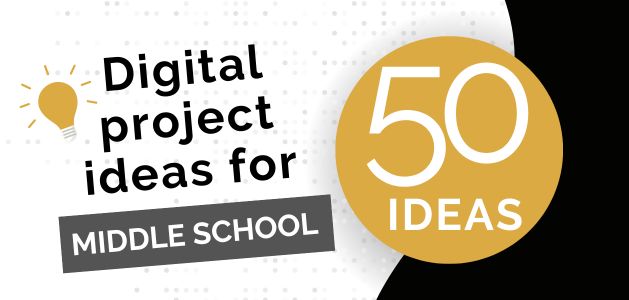
Using a device to fill out a digital worksheet isn't any more compelling than using a pencil to fill out a paper version. Encourage students to show what they know and capitalize on their interest in technology by creating digital projects on classroom topics using media formats that abound in the world around them.
Explore fifty ideas for using a digital approach to help middle school students meet standards and learning goals, divided into sections for:
Language Arts
Social Studies
- Arts & SEL
Use a digital approach to engage middle school students in reading comprehension and provide authentic opportunities for listening, speaking and writing in narrative, informational and argumentative form.
1. Design a new book cover
Have students create a new cover design for a book they are reading to demonstrate comprehension and explore character, plot, setting, symbolism, and conflict.
Explore a Book Cover Design lesson plan
Small, but mindful, changes can move a task beyond remember and retell. For example, replace a typical character trait cluster assignment with the task of developing a coat of arms for a story's protagonist that represents traits of the main character.
Creating a coat of arms provides students with an opportunity to think about objects, colors, symbols, and mottos that reflect a character's personality, passions, strengths, and experiences.
Wixie has a Coat of Arms template that makes it easy to add color, text, and images to show comprehension.
Explore a Character Scrapbook lesson plan
4. Create a Book Trailer
Much like the movie trailers students are familiar with, ask students to create a short, fast-paced book trailer that shares information about characters and events in a way that would motivate others to read the book.
Share the book trailers with the rest of the class or play them on the morning announcements to encourage others to read the books.
Explore a Book Trailer lesson plan
5. Visual Poetry
Blackout Poems
To write a blackout poem, the author covers up words on a page of text until the leftover words form a poem. Digital tools, like Wixie, include blackout poetry templates that contain a page of text from Tom Sawyer ( template ), Shakespeare ( template ), Lewis Carroll ( template ), and more.
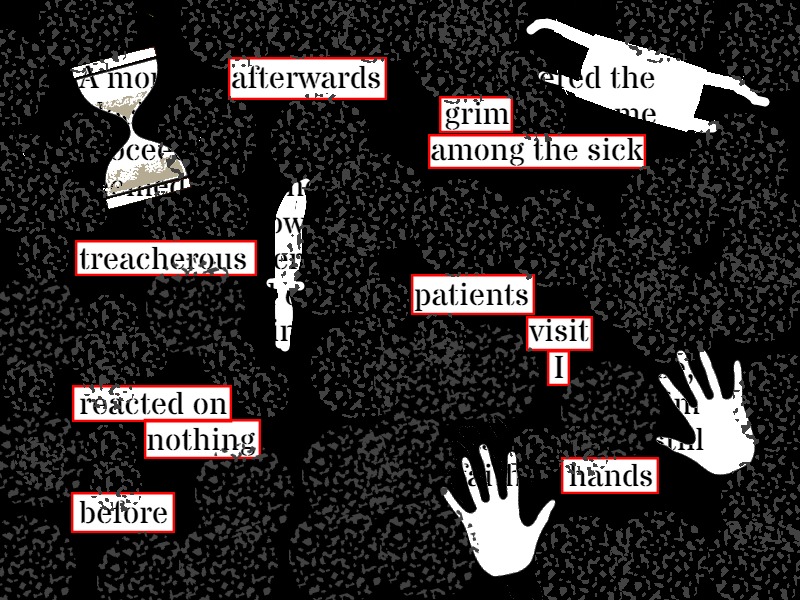
Students read the text and circle words they find interesting, then read them again to hear the resulting poem. Students can circle additional words to fill out the idea and then blackout the rest of the words and add additional decoration.
Video Poetry
Poetry's purposeful word choice encourages close, careful reading. Have students create visual versions of poems to demonstrate their comprehension of the author's word choice and intent.
Ask students to create a project and then type a poem from their favorite poet or one they have written, adding stanzas to each page. Students can add illustrations and record themselves reading it.
Explore a Visual Poetry lesson plan
6. Modernize a Myth or Legend
Rather than merely retelling stories, ask students to adapt, extend, or create new versions of the stories they are reading. Students can modernize an ancient myth to make it more relevant to their lives today, comparing similarities and differences along the way.
7. Cool Word Vocabulary
Visuals help form connections to words and help students better remember the meaning of the word.
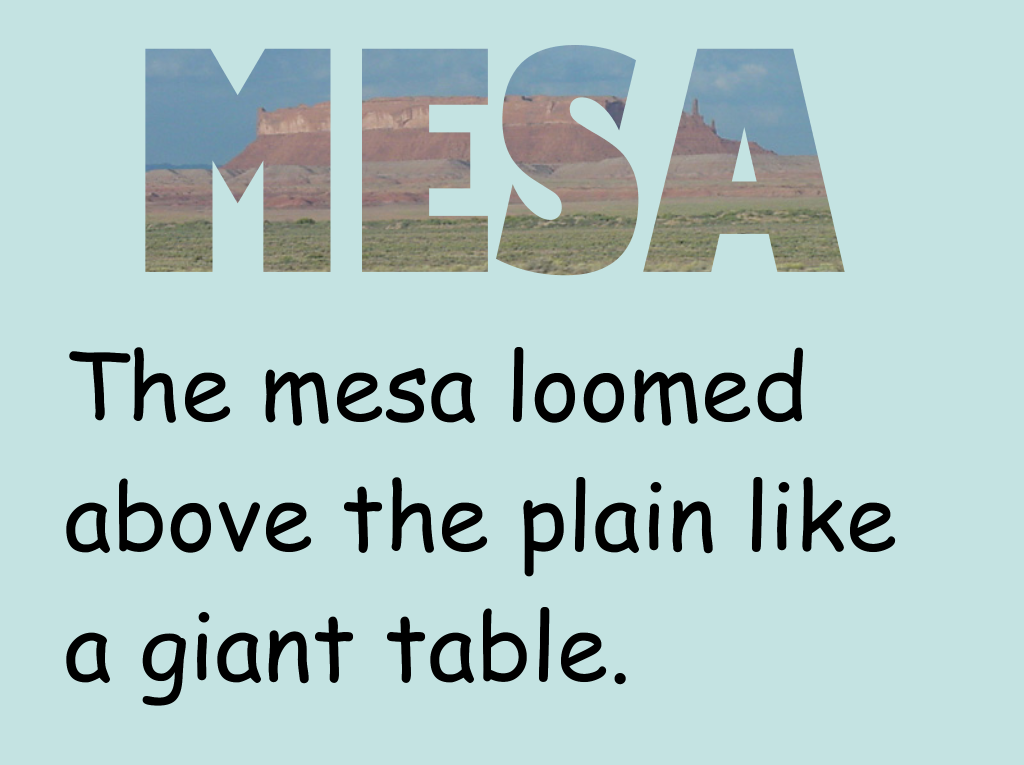
Digital tools make it easy to combine words and pictures and publish flash cards and posters you can use to improve vocabulary.
Explore a Cool Word Vocabulary lesson plan
8. Publish a personification story
Have students personify an object, and then use a digital tool like Wixie to write, illustrate and publish it as an eBook.
Students should brainstorm feelings the object would have to develop the conflict that will drive their story and begin writing. Scaffold their work further by asking them to identify character traits, determine setting, and codify the plot diagram or at a minimum the beginning, middle, and end.
Explore a Personification Stories lesson plan
9. Product: Fictitious Interviews
Creating a digital story in the form of an interview helps you engage students in writing and makes work with informational text come alive. Ask students to craft fictitious interviews between characters in a novel they are reading to demonstrate comprehension of the traits and behaviors.
Fictitious interviews are great ways to summarize and deepen comprehension for informational texts as well, making them perfect for science and social studies classrooms. For example, you can ask students to interview a figure from history, an animal, or even an artifact.
More ideas for conducting interviews
10. Product: Wanted posters
Creating a Wanted poster is a great way to get students thinking about the traits, experiences, and motivations of the characters in the stories they are reading.
It is often the antagonist that makes a story interesting or gives a plot direction. Have students create wanted posters for villains in the stories they are reading to evaluate comprehension and help them consider how they might craft a villain to add impact to their own writing.
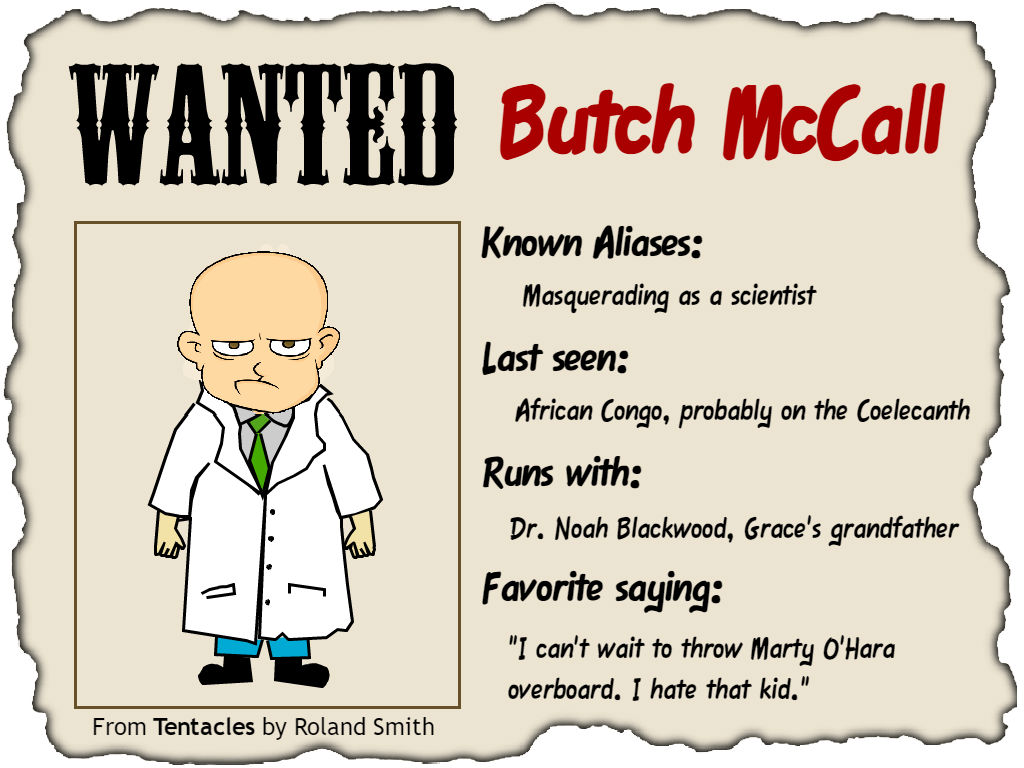
Creating Wanted posters can also help students clarify their thinking about definitions related to math , atomic elements and molecules , and figures from history .
Digital tools can provide a platform for middle school students to apply mathematical thinking and engage in standards of mathematical practice as they practice procedures, create visual models, and solve problems.
11. Work with Ratio and Rate
Use word problems ( ratio and rate ) to give students a sense of the ways that ratio and rate connect to the world around them.
Ask students to extend their understanding by writing their own word problems and challenging peers to solve them using strategies like a double-number line .
12. Putt Putt Polygons
Measuring the perimeter and area of polygons requires knowing and applying formulas like the Pythagorean Theorem. Give students a fun context for practicing by asking them to design a hole for miniature golf!
13. Math Backgrounds
Math can be frustrating for some students, especially when erasing mistakes makes equations or coordinate planes unreadable. This problem only adds to the challenge of tackling complex equations and data.
Use backgrounds like grids , plots , or coordinate planes , and have students use paint tools to write equations, fill areas, or plot lines.
14. Design a Dream Home
Ratio and rate also apply to scale in architectural drawings. Even if they don't want to be an architect, most students would love to dream up a bedroom, a tiny house, or even a mansion design.
Have students use a grid to create architectural designs to scale.
15. Play with Probability
You can teach students the rule of probability, but they will retain the information more if they come up with the mathematical rules on their own.
Have students calculate experimental probability by using dice or a specific spinner to do a task 40 times. Have students tally their results and use the data to calculate the experimental probability.
After establishing experimental probability, challenge students to come up with the theoretical probability for other toys. Bonus if they can generate a mathematical model for predicting probability.
16. Collect, analyze, and showcase data
Using data to make predictions, analyze and communicate information is becoming an essential skill for future success. While there are other steps in the data science process, students need to know how to collect and display data in ways that make it easy to visualize and understand.
Wixie makes this process easy with its design tools and templates, whether students are creating bar graphs (categorical), histograms (numerical), or other data displays.
17. Explore Geometric Transformations Through Tessellations
Tessellations are geometric patterns that repeat forever with no gaps or overlaps. Squares can tessellate easily. The word tessellate comes from the Greek word tesseres, which means four.
Inspire students with the work of M.C. Escher or Islamic tiling, and then have them create their own rotation or reflection tessellations.
Explore a Tessellation lesson plan
18. Online Math Academy
Showcase student expertise by asking them to create tutorials to teach others how to calculate, measure, solve and more.
19. Product: Explainer Video
What can your students teach others? Procedural writing is an excellent way for students to become experts in a topic and feel confident about their ability to share the information with others. This process of deconstructing and reorganizing information helps students cement concepts and provides an opportunity for you to pinpoint misconceptions.
So whether students are sharing content, a process they struggled to understand, or something they are passionate about, a how-to assignment is the perfect task to cement learning and inspire others.
20. Inform with Infographics
Have students research information, conduct surveys, or collect data on a topic. Then, students can create charts and graphs, analyze the information, and develop an infographic to display their findings.
Explore a Creating Infographics lesson plan
Digital tools provide a fun way for students to share ideas and explain scientific understandings for Life, Physical, Earth and Space and Engineering concepts.
21. Body System Beats
Ask students to create a music video to inform others about how a body system works, its functions, and how it interacts with other systems for optimal health.
Explore an It's My Body lesson plan
22. Cell Function Similes
Evaluate student understanding of animal cells by asking them to compare how various cell parts, including the nucleus, cell wall, cell membrane, chloroplast, and mitochondria, function like elements on a farm or parts of a school .
By illustrating these comparisons, students not only gain a deeper understanding of cellular structures and their functions but also develop their ability to make meaningful connections between seemingly unrelated concepts.
23. Model Scientific Processes
Actively engage students in scientific exploration by creating simulations and visual representations that model chemical reactions and scientific processes.
By encouraging them to create visual representations, students can deepen their understanding of complex concepts.
24. Expert Interviews
Students can create expert interview videos that delve into scientific concepts and discoveries. By conducting interviews with scientists or experts in the field, students can explore complex ideas and present their findings in an engaging and accessible format; fostering a deeper understanding of science among their peers.
Don't have access to an expert? Craft a fictitious interview!
25. Write Informational Texts
Ask students to create informational science texts to inform or share learning with others. Through these books, students can convey their understanding of various concepts.
26. Terminology Journals
Students benefit from explicit vocabulary instruction, especially terminology linked to a specific discipline or topic. Collecting, defining and refining are easy with digital terminology journals.
27. Animate a Scientific Process
Labeling and diagramming are great, but modeling a process through animation can help students better understand the macro- and micro- scopic processes. For example, ask students to animate a chemical process or geologic cycle, illustrating the stages and processes involved.
Read more about Animating in Secondary Math and Science
28. Connect Physics to Fun
Help students see physics as more than rules and equations by connecting it to a favorite sport or physical activity.
Explore a Fastballs, Free Throws, and Physics lesson plan
29. Publish Informational Comics
The limited amount of space in a comic's panels requires students to choose key points in a process or important factors in chemical reactions as they work to design and illustrate them.
30. Raise Awareness of Environmental and Health Issues
Students in middle school are starting to have the capabilities and passions to change the world. Have students produce public service announcements (PSAs) to raise awareness, inform, and change behavior.
When developing a public service announcement (PSA), students have a chance to practice and apply persuasive writing skills in a real-world, authentic context. A short PSA targeted at a particular audience also encourages students to focus on writing organization, as well as voice and word choice.
Explore a Here's to Your Health lesson plan
Engaging middle school students in deep thinking about history and community helps to develop citizens who have powerful inquiry and critical thinking skills.
31. Biographies
Using a digital storytelling approach to biographies helps prevent their writing from becoming a list of unrelated facts. Having students combine their research results with imagery, sound, and other media can help them better combine aspects of narrative and informational writing for a more compelling script.
Biographies aren't always books, either. There are even entire cable television channels devoted to biographies. Consider having your students create video biographies, too.
Explore a Video Biography lesson plan
32. Historical Journal
To help students think deeply about how events, circumstances, culture, and leaders in the past affect the lives of human beings, ask students to create a series of fictional journal entries that indicate how events in the past might have affected the life and perspective of a specific person living during that time. ( template )
Explore a Historical Journal lesson plan
33. Make a Map
Have students use paint tools and text labels to create maps to show the geographic features, regions, and/or economy of an area, country, or civilization.
34. Produce the News
Our students have grown up watching shows, but not necessarily the news. Challenge your students to develop a news report they would actually want to watch based on the content they are learning.
Writing a news report requires students to organize and summarize information and use new vocabulary and terminology in context.
Explore a News Broadcast lesson plan
35. Interview a Community Leader
Ask students to interview a community member to expand their knowledge and experience, as well as encourage listening, curiosity, and empathy skills.
Encourage students to change the order of questions or the order of the answers shared so that the story " unfolds a lesson learned ." In other words, what is the moral of this person's story, or what can it teach the rest of us?
36. Explore the Issues
Students in middle school are idealistic and often passionate about current issues. While they may simply want to proclaim their ideas on a billboard , use this opportunity to ask them to back up their opinions with claims and evidence .
37. Develop a Virtual Museum
Have students design an online museum, displaying artifacts and stories to engage others in the heritage of their community or a specific region.
Explore a Virtual Museum lesson plan
38. Host a Tourism (Geography) Trade Show
To help students better understand the unique features of a place, have them develop materials for a virtual tourism trade show where students promote and pitch that location to attract visitors.
Explore a Tourism Tradeshow lesson plan
39. Publish a Historical Newspaper
Have students create a newsletter or newspaper to show what they have learned about the events, politics, and cultures of a different time in history.
Newspaper creation helps students better understand the perspectives of those in different times and cultures.
Explore a Day in the Life lesson plan
40. It's a Postcard Point of View
After learning something new, have students tell someone else using a postcard! They could write a postcard from a specific time in history or a unique geographic or cultural destination.
Arts and Social-Emotional Learning
Wixie provides a canvas for students to set goals, explore emotions, and express themselves through art and music.
41. Set SMART goals
The simple act of writing down your goals makes you more likely to achieve them, so have students take some time to set personal goals to accomplish this school or calendar year. Developing goals that are SMART (specific, measurable, attainable, relevant, and timely) can help even more.
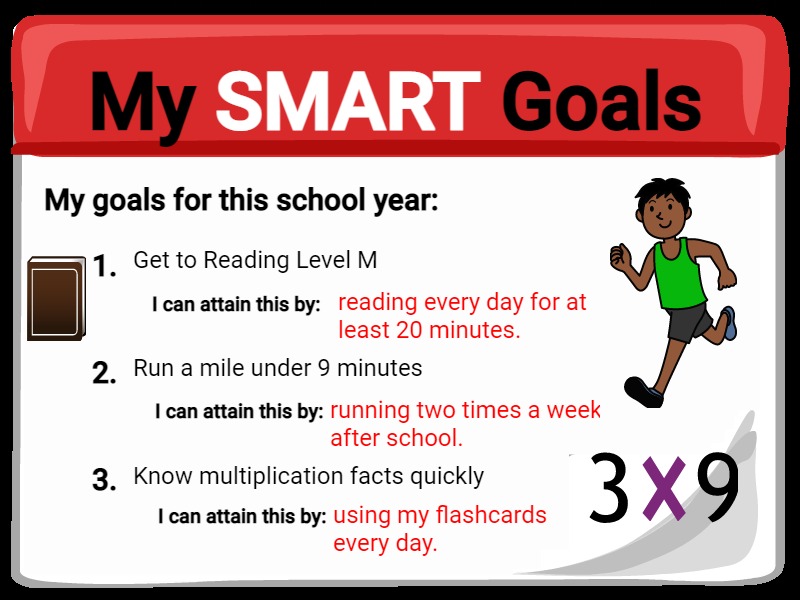
Have students use the goals as a home screen on their devices so they see a daily reminder of what they are working to achieve.
Explore a SMART Goals lesson plan
42. Design a Vision Board
A vision board provides inspiration and motivation to reach dreams and goals. Students can choose a goal and add pictures of what they think achieving them looks and feels like.
Digital tools, like Wixie, make it easy to combine images. When vision boards are complete, print or export an image so you can post to a place you are everyday, like on a desk or phone lock screen, for a daily motivator.
Explore a Vision Boarding lesson plan
43. Create an Arcimboldo-inspired self-portrait
Giuseppe Arcimboldo is an Italian Renaissance painter known for his portraits of people that use objects like fruit and books. Challenge students to create Arcimboldo-style self-portraits by combining clip art images in an imaging tool.
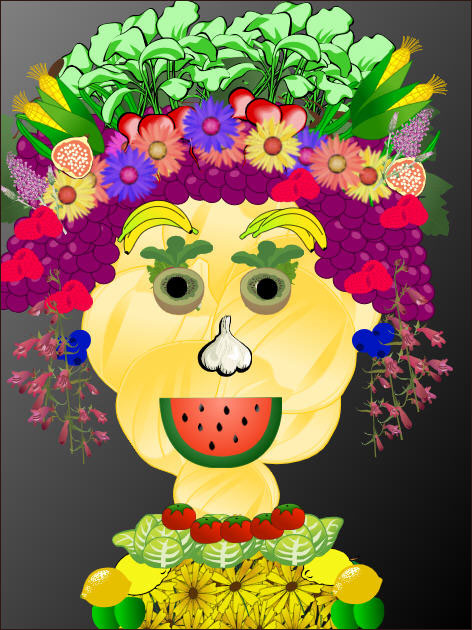
Explore an Arcimboldo-Inspired Self-Portraits lesson plan
44. Play Music
While you may not be teaching music theory, expressing one's feelings and emotions through music is both fun and therapeutic. You can try the online keyboard below or give students options like:
- a xylophone
- percussion tubes
45. Write a Classroom Constitution
Involving students in creating a class constitution makes them part of the process of government, giving them a vested interest and responsibility in following and upholding the laws they have determined.
Explore a Classroom Constitution lesson plan
Inform students about surrealism. You might inspire them by reading a book like Pish, Posh, Hieronymus Bosch .
Have students use paint tools to illustrate bizarre creatures juxtaposed around a normal self-portrait and then write a poem about the way the surrealism makes them feel.
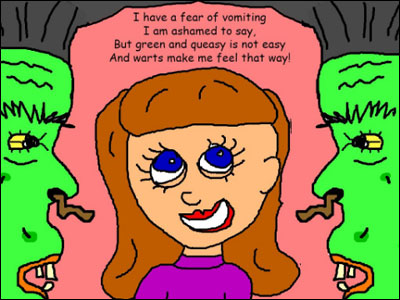
This example takes advantage of the mirror symmetry options for the paint brush in Wixie .
Explore a Surreal Symmetry lesson plan
47. Explore Collaboration Skills
In All in the Same Boat by Wilkie Martin, a greedy rat is shown how no one wins when success is achieved at the expense of others.
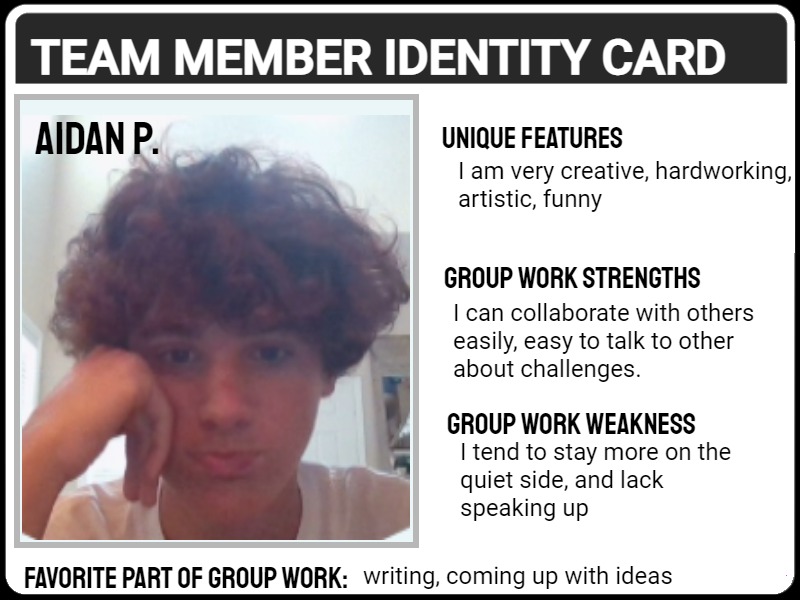
Discuss what makes a great teammate and then ask students to create their own Team Member ID Card to let future group members know a bit about how they work collaboratively.
48. Send a virtual compliment
Show your appreciation for a classmate, family member, or friend with a compliment card. This is a great idea for a random acts of kindness promotion.
Tools like Wixie let you print multiple copies or pages onto a single sheet of paper, making it easy to print, fold, and then drop in a classmate's lunch box or backpack.
49. Make a playlist for your future
Students likely already have playlists for their favorite songs, and many have playlists for different moods. Use this as a jumping-off point to ask them to "audiolize" what their future sounds like by creating a playlist .
Students can add songs they know or create new artists and bands and write descriptions for them.
50. Compose a melody
Use music production or notation software to have students compose their own music.
Have students record themselves singing their melody or playing their compositions on a recorder or keyboard.
Once they have experience with digital projects, let students choose the product or way they will demonstrate understanding… simply make them argue their case before they begin. No matter what you or they choose, transfer as much responsibility as possible to students to motivate and empower them to control their own learning.

by Melinda Kolk
Melinda Kolk ( @melindak ) is the Editor of Creative Educator and the author of Teaching with Clay Animation . She has been helping educators implement project-based learning and creative technologies like clay animation into classroom teaching and learning for the past 15 years.
Get the latest from Creative Educator
Creative classroom ideas delivered straight to your in box once a month.
Add me to the Creative Educator email list!
Popular Topics
Digital Storytelling
21st Century Classrooms
Project-based Learning
- Hero's Journey Lesson Plan
- Infographics Lesson Plan
- Design a Book Cover Lesson Plan
- Informational text projects that build thinking and creativity
- Classroom constitution Lesson Plan
- Set SMART Goals Lesson Plan
- Create a visual poem Lesson Plan
- Simple surveys and great graphs Lesson Plan
- Embrace action research

Six ways to implement digital storytelling
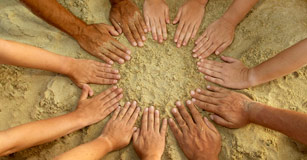
Get the most out of collaboration during student project work
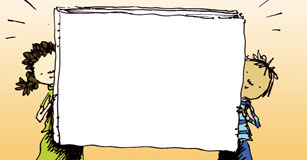
The glorious, wonderful, empty page
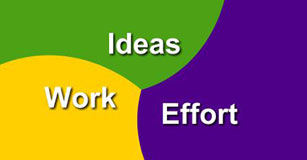
Make It Matter! Move from projects to project-based learning
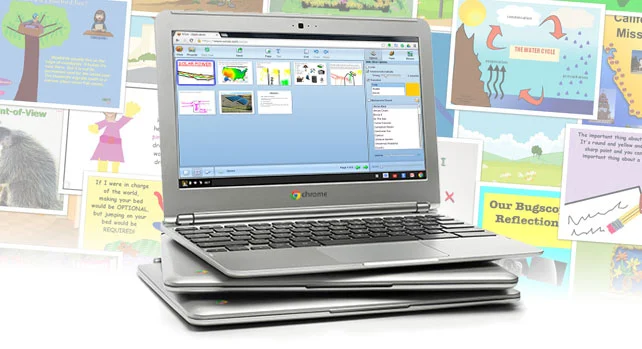
More sites to help you find success in your classroom

Share your ideas, imagination, and understanding through writing, art, voice, and video.

Rubric Maker
Create custom rubrics for your classroom.

Pics4Learning
A curated, copyright-friendly image library that is safe and free for education.

Write, record, and illustrate a sentence.
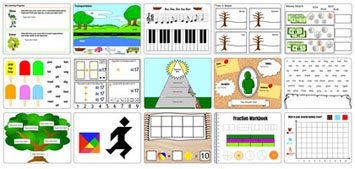
Interactive digital worksheets for grades K-8 to use in Brightspace or Canvas.
Professional Learning

Teaching and Learning
Informational Text
English Language Aquisition
Visual Arts
© 2024 Tech4Learning, Inc | All Rights Reserved | Privacy Policy
© 2024 Tech4Learning, Inc | All Rights Reserved | https://www.thecreativeeducator.com

- Bahasa Indonesia
- Eastern Europe
- Moscow Oblast
Elektrostal
Elektrostal Localisation : Country Russia , Oblast Moscow Oblast . Available Information : Geographical coordinates , Population, Area, Altitude, Weather and Hotel . Nearby cities and villages : Noginsk , Pavlovsky Posad and Staraya Kupavna .
Information
Find all the information of Elektrostal or click on the section of your choice in the left menu.
- Update data
Elektrostal Demography
Information on the people and the population of Elektrostal.
Elektrostal Geography
Geographic Information regarding City of Elektrostal .
Elektrostal Distance
Distance (in kilometers) between Elektrostal and the biggest cities of Russia.
Elektrostal Map
Locate simply the city of Elektrostal through the card, map and satellite image of the city.
Elektrostal Nearby cities and villages
Elektrostal weather.
Weather forecast for the next coming days and current time of Elektrostal.
Elektrostal Sunrise and sunset
Find below the times of sunrise and sunset calculated 7 days to Elektrostal.
Elektrostal Hotel
Our team has selected for you a list of hotel in Elektrostal classified by value for money. Book your hotel room at the best price.
Elektrostal Nearby
Below is a list of activities and point of interest in Elektrostal and its surroundings.
Elektrostal Page

- Information /Russian-Federation--Moscow-Oblast--Elektrostal#info
- Demography /Russian-Federation--Moscow-Oblast--Elektrostal#demo
- Geography /Russian-Federation--Moscow-Oblast--Elektrostal#geo
- Distance /Russian-Federation--Moscow-Oblast--Elektrostal#dist1
- Map /Russian-Federation--Moscow-Oblast--Elektrostal#map
- Nearby cities and villages /Russian-Federation--Moscow-Oblast--Elektrostal#dist2
- Weather /Russian-Federation--Moscow-Oblast--Elektrostal#weather
- Sunrise and sunset /Russian-Federation--Moscow-Oblast--Elektrostal#sun
- Hotel /Russian-Federation--Moscow-Oblast--Elektrostal#hotel
- Nearby /Russian-Federation--Moscow-Oblast--Elektrostal#around
- Page /Russian-Federation--Moscow-Oblast--Elektrostal#page
- Terms of Use
- Copyright © 2024 DB-City - All rights reserved
- Change Ad Consent Do not sell my data
Current time by city
For example, New York
Current time by country
For example, Japan
Time difference
For example, London
For example, Dubai
Coordinates
For example, Hong Kong
For example, Delhi
For example, Sydney
Geographic coordinates of Elektrostal, Moscow Oblast, Russia
City coordinates
Coordinates of Elektrostal in decimal degrees
Coordinates of elektrostal in degrees and decimal minutes, utm coordinates of elektrostal, geographic coordinate systems.
WGS 84 coordinate reference system is the latest revision of the World Geodetic System, which is used in mapping and navigation, including GPS satellite navigation system (the Global Positioning System).
Geographic coordinates (latitude and longitude) define a position on the Earth’s surface. Coordinates are angular units. The canonical form of latitude and longitude representation uses degrees (°), minutes (′), and seconds (″). GPS systems widely use coordinates in degrees and decimal minutes, or in decimal degrees.
Latitude varies from −90° to 90°. The latitude of the Equator is 0°; the latitude of the South Pole is −90°; the latitude of the North Pole is 90°. Positive latitude values correspond to the geographic locations north of the Equator (abbrev. N). Negative latitude values correspond to the geographic locations south of the Equator (abbrev. S).
Longitude is counted from the prime meridian ( IERS Reference Meridian for WGS 84) and varies from −180° to 180°. Positive longitude values correspond to the geographic locations east of the prime meridian (abbrev. E). Negative longitude values correspond to the geographic locations west of the prime meridian (abbrev. W).
UTM or Universal Transverse Mercator coordinate system divides the Earth’s surface into 60 longitudinal zones. The coordinates of a location within each zone are defined as a planar coordinate pair related to the intersection of the equator and the zone’s central meridian, and measured in meters.
Elevation above sea level is a measure of a geographic location’s height. We are using the global digital elevation model GTOPO30 .
Elektrostal , Moscow Oblast, Russia

IMAGES
VIDEO
COMMENTS
Class Assignment Calendar for School year 2024-2025 August 2024 to July 2025 Class Period Assignment Book Calendar School Schedule Book. by JOh Publishing. Paperback. $9.99 $ 9. 99. ... Global Datebooks Dated Middle School or High School Student Planner for Academic Year 2024-2025 Includes Ruler/Bookmark and Planning Stickers (Matrix Style - 7 ...
At Success by Design, we understand the challenges middle school students face and use this knowledge to create planners that give students the ability to focus, learn and grow. Our student planners have a 100% satisfaction guarantee. If you or your students are not completely satisfied with our planners, call one of our customer service ...
15. Watercolor Rainbow Book Report. This is great for biography research projects. Students cut out a photocopied image of their subject and glue it in the middle. Then, they draw lines from the image to the edges of the paper, like rays of sunshine, and fill in each section with information about the person.
Now 25% Off. $10 at Amazon. Straight to the point and focused on productivity, the Simple Elephant Planner is designed to keep you motivated and ready to achieve your goals. School is far more than just going to class and going home. The Elephant Planner is designed for everything in between.
The store will not work correctly in the case when cookies are disabled.
We offer 14 Student Planner and Agenda products for 2024-2025 that promote time management and organization in your classroom. Each of our Student Planners undergoes thorough research and design processes to provide the planning and communication features you love and depend on, as well as S T E A M content that is in sync with your curriculum. To help you decide which planner meets your needs ...
Run with purpose towards school assignments using the best aid assignment notebook 2021-2022! Offer your kid everything he/she need to organize their school year! This homework planner for kids is the perfect aid to recording their class schedule, tracking daily assignments, homework notes, activities and events and much more!
Projects to Engage Middle School Readers. It's my fault. I'll admit it. During my eight years in the classroom, I ruined at least two amazing literary works by assigning horrifically dull reading projects. My only hope is that those middle school students, whose enthusiasm I quashed, found another way to become passionate about literature.
Whether you're teaching a whole-class novel, or finishing a round of independent reading or literature circles, post-reading assessments are always more engaging when they're more than just a test or essay. In this post, you'll discover a dozen fun book report ideas for your middle or high school ELA students, curated by a team of experienced English teachers.
Common Sense Media has compiled this list of 25 of the best books for middle school book reports. For younger students, the article suggests you check out the site's "50 Books All Kids Should Read Before They're 12." ... Kori Morgan outlines techniques for adapting the book report assignment to the high school level in this post for The Pen ...
5. Character Autopsy. This activity includes creativity and deep analytical thinking. First, you will need butcher paper, the text you're reading and the list of points to address. This activity allows students to find textual evidence to represent the head, heart, hands, feet, and eyes.
27. Animate a Scientific Process. Labeling and diagramming are great, but modeling a process through animation can help students better understand the macro- and micro- scopic processes. For example, ask students to animate a chemical process or geologic cycle, illustrating the stages and processes involved.
764 books based on 2068 votes: To Kill a Mockingbird by Harper Lee, The Giver by Lois Lowry, The Outsiders by S.E. Hinton, Animal Farm by George Orwell, ...
Design an Assessment. While many middle schoolers dread taking tests, most will love making them! For this book report idea, students will create a quiz or test (along with an answer key) based on their books. The assessment can be in essay form, true/false, multiple-choice, short answers, or a combination of all.
Elektrostal is a city in Moscow Oblast, Russia, located 58 kilometers east of Moscow. Elektrostal has about 158,000 residents. Mapcarta, the open map.
Elektrostal. Elektrostal ( Russian: Электроста́ль) is a city in Moscow Oblast, Russia. It is 58 kilometers (36 mi) east of Moscow. As of 2010, 155,196 people lived there.
Elektrostal Geography. Geographic Information regarding City of Elektrostal. Elektrostal Geographical coordinates. Latitude: 55.8, Longitude: 38.45. 55° 48′ 0″ North, 38° 27′ 0″ East. Elektrostal Area. 4,951 hectares. 49.51 km² (19.12 sq mi) Elektrostal Altitude.
Geographic coordinates of Elektrostal, Moscow Oblast, Russia in WGS 84 coordinate system which is a standard in cartography, geodesy, and navigation, including Global Positioning System (GPS). Latitude of Elektrostal, longitude of Elektrostal, elevation above sea level of Elektrostal.